March 31, 2024
Prelims Pointers
March 31, 2024
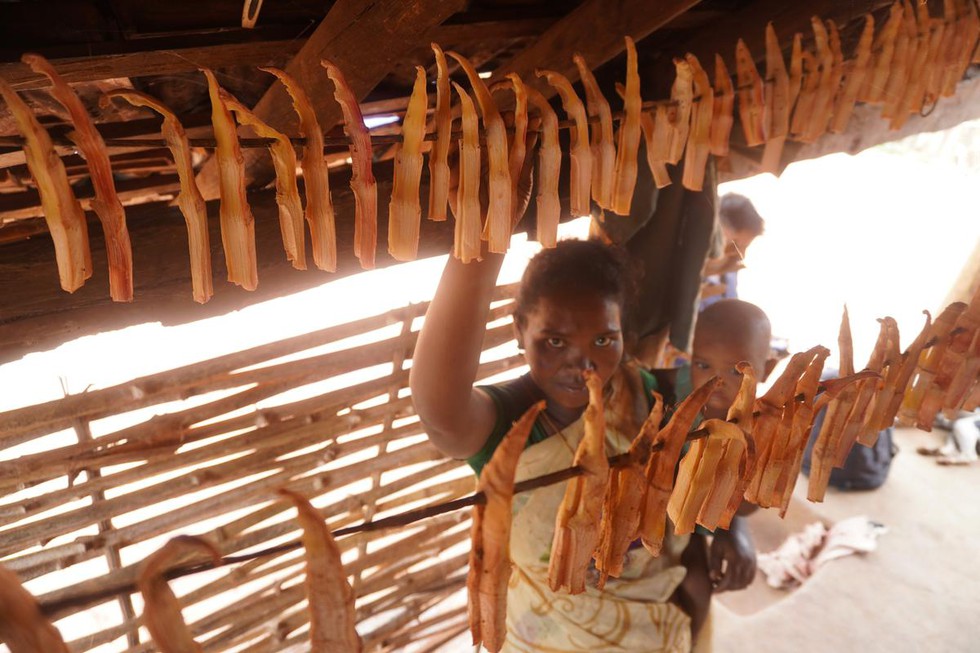
About Konda Reddi Tribe:
- Konda Reddis is a Particularly Vulnerable Tribal Group inhabiting the banks of the river Godavari and also in the hilly forest tracts of Godavari and Khammam districts of Andhra Pradesh.
- Their mother tongue is Telugu, with a unique accent.
- Subdivisions:
- The Konda Reddy tribe is divided into exogamous septs for regulating matrimonial relations.
- Like other Telugu-speaking people, their surnames are prefixed to individual names.
- Generally, each sept is exogamous, but certain septs are considered as brother septs and marriage alliances with brother septs (agnate relations) are prohibited.
- Family and Marriage:
- The family is patriarchal and patrilocal. Monogamy is a rule, but polygamous families are also found.
- Marriage by negotiations, by love and elopement, by service, by capture and by exchange are socially accepted ways of acquiring mates.
- Religion: The primary religion practiced by the Konda Reddi is Folk Hinduism, characterized by local traditions and cults of local deities worshiped at the community level.
- Political Organization:
- They have their own institution of social control called ‘Kula Panchayat’.
- Each village has a traditional headman called ‘Pedda Kapu’.
- The office of the headman is hereditary, and the headman is also the Pujari (priest) of the village deities.
- Livelihood:
- They are primarily shifting cultivators and largely depend on flora and fauna of forest for their livelihood.
- They collect and sell non timber forest produce like tamarind, adda leaves, myrobolan, broom sticks, etc., to supplement their meagre income.
- They cultivate largely jowar, which is their staple food.
Prelims Pointers
March 31, 2024
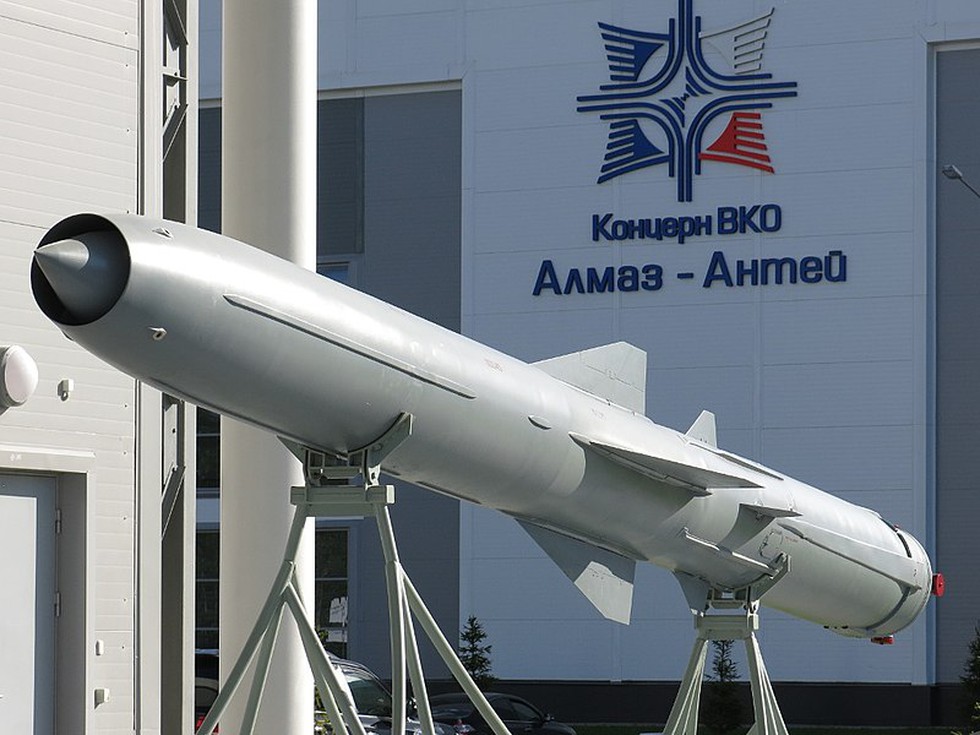
About Onyx Missile:
- The P-800 Onyx, a supersonic medium-range cruise missile, is designed to combat surface ship groups, as well as to destroy ground targets in conditions of strong fire and electronic countermeasures.
- Features:
- Also known as Russian Brahmos, it can reach speeds of over 3,000 km/h, making it extremely difficult to intercept.
- Additionally, the missile operates at an altitude of 10-15 meters above land or water, further enhancing its stealth capabilities.
- The missile has a range of up to 300 kilometers in its default trajectory and a range of 120 km in a low-altitude trajectory.
- It can be launched from surface ships, submarines and land-based equipment. It is a self-guided munition, designed with the "shoot and forget" principle in mind.
- Unlike some other missiles that rely on extensive target data, the Onyx missile requires minimal information about its target to strike it successfully.
Prelims Pointers
March 31, 2024
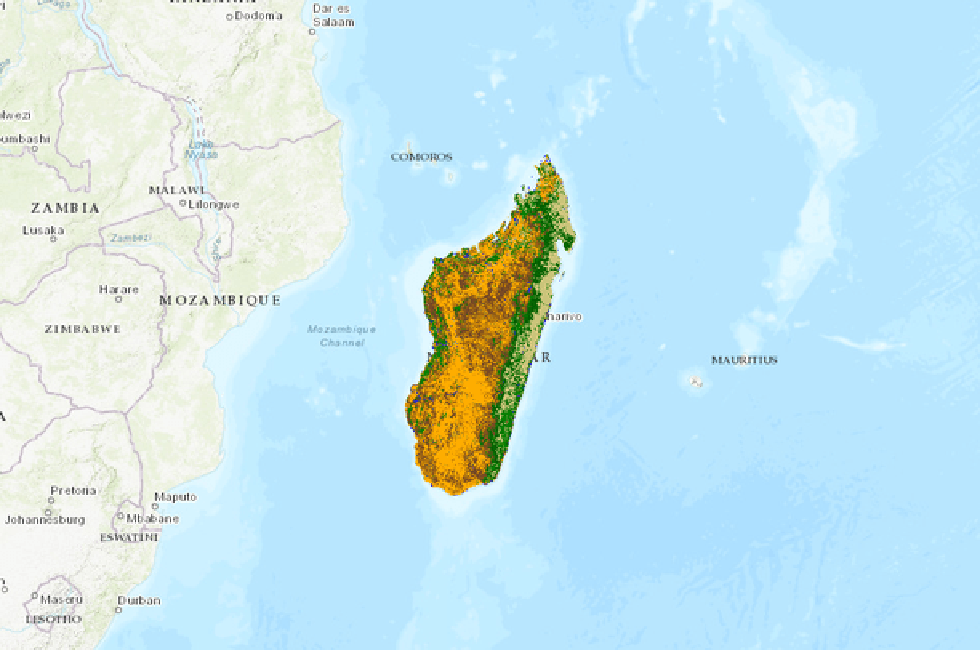
About Madagascar:
- Located off the coast of East Africa in the Indian Ocean, Madagascar is the second-largest island country in the world.
- It covers an area of 592,800 sq. kilometers.
- Geography: The country can be divided into three parallel longitudinal physiographic regions.
- The coastal strip in the east, the central plateau and the western regions of low plateaus and plains.
- The Tsaratanana Massif region at the northern end of the island is home to Madagascar's highest point, Maromokotro, at 2,876 m.
- History:
- France invaded the island in 1883. France officially declared Madagascar a French colony in 1896.
- After World War II, in 1947, locals fought for their independence from France in what became known as the Malagasy Uprising. In 1960, Madagascar finally became an independent nation.
- Capital: Antananarivo
- Languages: Malagasy, French
- Government: It is a semi-presidential republic. The public elects a president, who in turn appoints a prime minister to put together a cabinet to advise the president.
- Economy: Eighty percent of Madagascar’s economy is fueled by agricultural industries, including forestry and fishing. Among the island’s most frequently sold agricultural products are coffee, vanilla and sugarcane.
- Biodiversity:
- Lush rainforests, dry deserts, and grassy plains cover the island, with coral reefs and mangrove forests stretching along its coastlines.
- Almost 90 percent of the plants and animals living on Madagascar aren’t found anywhere else in the world. That’s because strong ocean currents have isolated the island from the African continent, so the species living there haven’t traveled beyond the island’s borders.
Prelims Pointers
March 31, 2024
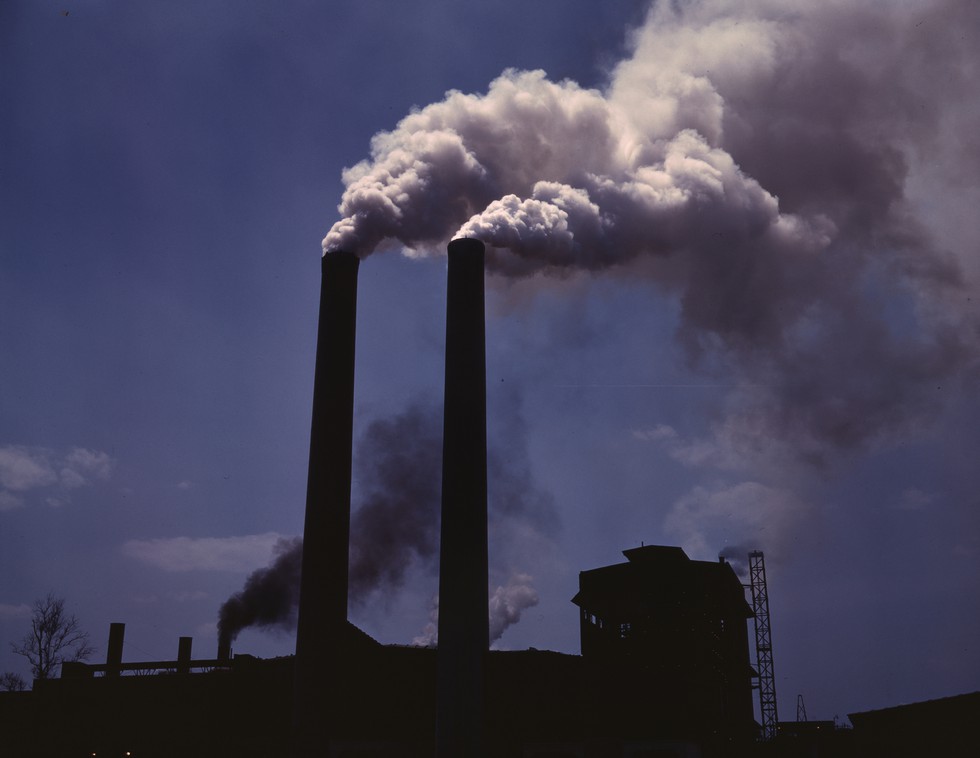
About Central Pollution Control Board (CPCB):
- It is a statutory organisation constituted in September 1974 under the Water (Prevention and Control of Pollution) Act, 1974.
- Further, CPCB was entrusted with the powers and functions under the Air (Prevention and Control of Pollution) Act, 1981.
- It provides technical services to the Ministry of Environment, Forests and Climate Change (MOEFCC) of the provisions of the Environment (Protection) Act, 1986 and advises the Central Government on any matter concerning the prevention and control of water and air pollution and the improvement of the quality of air.
- Principal Functions of the CPCB:
- to promote the cleanliness of streams and wells in different areas of the States by prevention, control, and abatement of water pollution
- to improve the quality of air and to prevent, control or abate air pollution in the country.
- Standardization activity of CPCB:
- CPCB lays down standards for streams or wells in consultation with the State Governments, and also lays down standards for the quality of air.
- CPCB also prepares manuals, codes, and guidelines relating to the treatment and disposal of sewage and trade effluents, as well as for stack gas cleaning devices, stacks, and ducts.
- In general, the following nine categories of standards are developed by CPCB:
- National ambient air quality
- Water Quality Criteria from different sources
- Standards for Emission or Discharge of Environmental Pollutants from various Industries (Issued under Environment Protection Rules, 1986)
- Standards for Treatment and Disposal of Bio-Medical waste by Incineration
- Guidelines for the disposal of Common Hazardous Wastes by Incineration
- Emission norms for vehicles
- Auto fuel quality
- Emission standard, Noise limits for Diesel Engines
- Emission & Noise Limit of LPG & CNG Generator Sets
- Apart from the above, under the Comprehensive Industry Document Series (COINDS), CPCB also formulates the Minimal National Standards (MINAS) specific for various categories of industries with regards to their effluent discharge (water pollutants), emissions (air pollutants), noise levels and solid waste. These standards are required to be adopted by State Governments as minimal standards.
Prelims Pointers
March 31, 2024
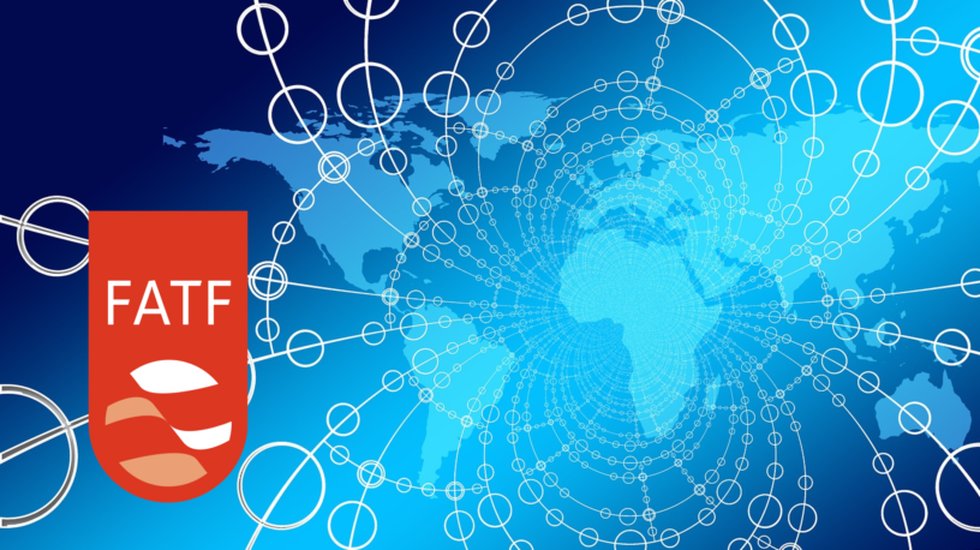
About Financial Action Task Force (FATF):
- It is an inter-governmental policy-making and standard-setting body dedicated to combating money laundering and terrorist financing.
- Objective: To establish international standards and to develop and promote policies, both at national and international levels, to combat money laundering and the financing of terrorism.
- Origin:
- It was established in 1989 during the G7 Summit in Paris to develop policies against money laundering.
- In 2001, its mandate was expanded to include terrorism financing.
- Headquarters: Paris, France.
- Its members include 39 countries, including the United States, India, China, Saudi Arabia, Britain, Germany, France and the EU as such.
- India became a member of FATF in 2010.
- What are FATF 'grey list' and 'blacklist'? FATF has 2 types of lists:
- Black List: Countries known as Non-Cooperative Countries or Territories (NCCTs) are put on the blacklist. These countries support terror funding and money laundering activities. The FATF revises the blacklist regularly, adding or deleting entries.
- Grey List: Countries that are considered a safe haven for supporting terror funding and money laundering are put on the FATF grey list. This inclusion serves as a warning to the country that it may enter the blacklist.
- Three countries North Korea, Iran and Myanmar are currently in FATF’s blacklist.
- Consequences of being on the FATF blacklist:
- No financial aid is given to them by the International Monetary Fund (IMF), the World Bank, the Asian Development Bank (ADB) and the European Union (EU).
- They also face a number of international economic and financial restrictions and sanctions.
Prelims Pointers
March 31, 2024
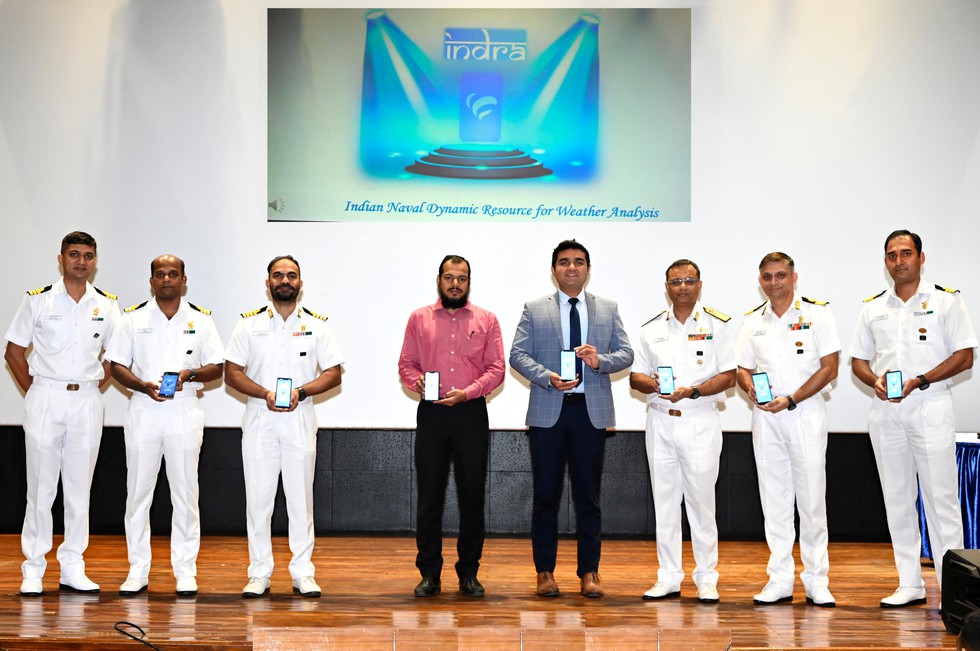
About INDRA App:
- The Indian Naval Dynamic Resource for Weather Analysis (INDRA) app will help to disseminate weather related information and forecasts empowering optimal & quick decision making.
- The application has been developed by BISAG (Bhaskaracharya National Institute for Space Applications and Geo-informatics) in coordination with Directorate of Naval Oceanology and Meteorology, Indian Navy.
Key facts about BISAG
- It is an Autonomous Scientific Society registered under the Societies Registration Act, 1860.
- It undertakes technology development & management, research & development, facilitate National & International cooperation, capacity building and support technology transfer & entrepreneurship development in area of geo-spatial technology.
- The organisation has three main domain areas: Satellite Communication, Geo-informatics and Geo-spatial technology.
- Nodal Ministry: Ministry of Electronics & Information Technology (MeitY), Government of India.
Prelims Pointers
March 31, 2024
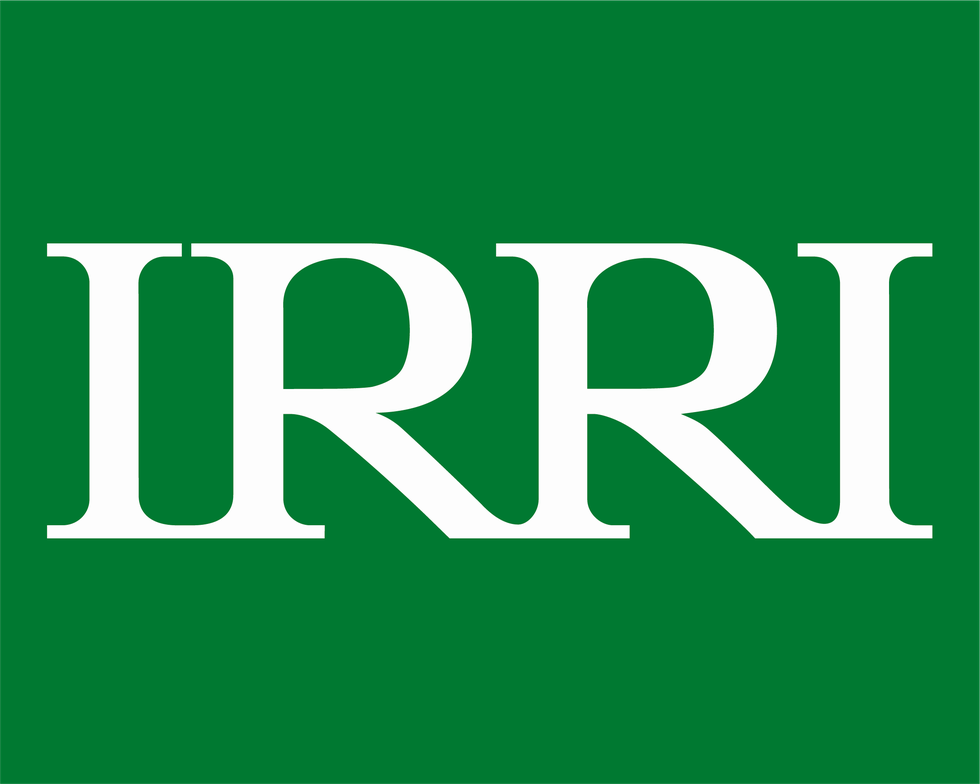
About International Rice Research Institute:
- It is an independent, nonprofit, research and educational institute, founded in 1960 by the Ford and Rockefeller foundations with support from the Philippine government.
- It is the world’s premier research organization dedicated to reducing poverty, hunger, and malnutrition through rice science.
- It aims to improve the health and welfare of those who depend on rice-based agri-food systems and promote and protect the environmental sustainability of rice farming for future generations.
- IRRI's research for development is characterized by its collaborative nature: from alliances with advanced research institutes; through strong collaborations and capacity development with governments and national agricultural research and extension systems.
- The Government of India vide its Gazette notification recognises IRRI as an international organisation and accorded privileges and immunities (As per UN Privileges and Immunities Act 1947) that are applicable to United Nations (UN) organizations, for all offices and activities of IRRI in India including, for the IRRI South Asia Regional Centre.
- Headquarter: Los Banos, Philippines.
Prelims Pointers
March 31, 2024
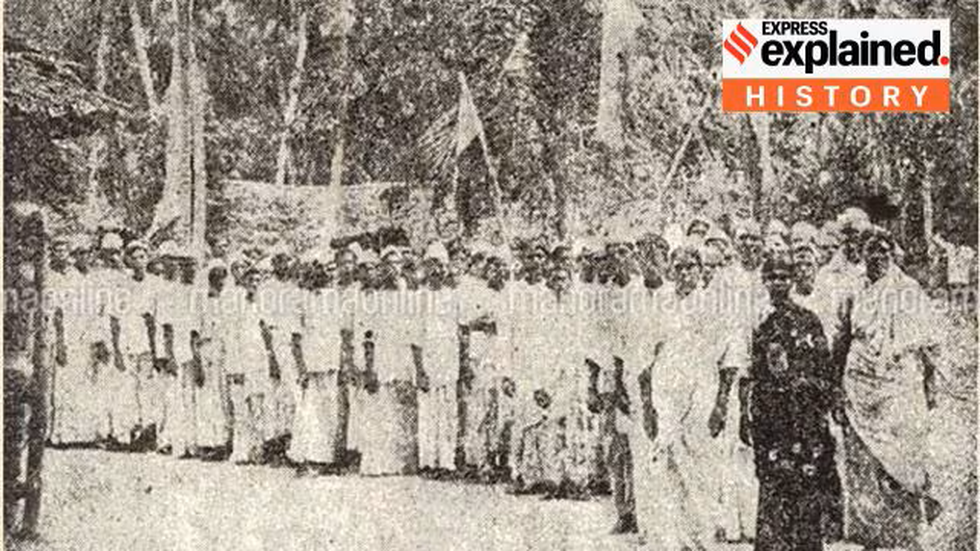
About Vaikom Satyagraha:
- It is the first anti-caste movement, as the pupil of the depressed class and untouchables were restricted from entering the temple.
- It was aimed to establish the rights of the oppressed classes to walk on the roads to the Shree Mahadeva Temple in Vaikom in Kottayam district.
- Background:
- The issue of temple entry was first raised by Ezhava leader TK Madhavan in a 1917 editorial in his paper Deshabhimani.
- In AICC (All India Congress Committee) meeting in Kakinada 1923, K Madhavan along with Sardar Panikkar and KP Kesava Menon submitted a petition to the Travancore legislative council.
- The petition sought to grant the right to temple entry and worship of gods for all sections of the society irrespective of caste, creed and community. The movement was launched on 30th March 1924.
- The movement in the vicinity of Mahadev temple in Kottayam district of Kerala took place during 1924-1925.
- Factors responsible to Satyagraha:
- Christian missionaries, supported by the East India Company, had expanded their reach and many lower castes converted to Christianity to escape the clutches of an oppressive system that continued to bind them.
- Maharaja Ayilyam Thirunal took many progressive reforms and the most important of these was the introduction of a modern education system with free primary education for all – even lower castes.
- Prominent people who supported this Satyagraha are Sree Narayana Guru and Periyar E.V Ramaswamy.
Prelims Pointers
March 31, 2024
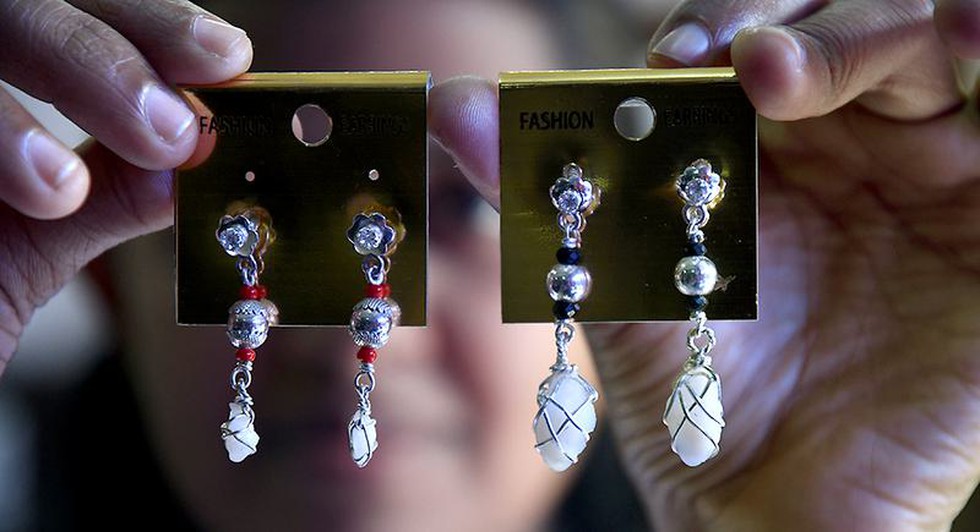
About Fish otolith:
- Otoliths are biomineralised ear stones that help fish hear and provide it a sense of balance. These are important in fish studies as they have species-specific shapes and grow throughout their life.
- They are commonly known as "earstones," are hard, calcium carbonate structures located directly behind the brain of bony fishes.
- There are three types of otoliths, all of which aid fish in balance and hearing:
- Sagitta: It is involved in the detection of sound and the process of hearing or converting sound waves into electrical signals.
- Asteriscus: It is involved in the detection of sound and the process of hearing.
- Lapillus: It is involved in the detection of gravitational force and sound.
- Different species have otoliths of different shapes and sizes; and cartilaginous fishes, such as sharks, skates and rays, have none.
- Significance:
- These otoliths can be used to identify the species, size, age, growth rate, and season of death of an individual fish.
- Analysis of the oxygen isotope values of fish otoliths can provide information on the temperature of the water in which the fish lived.
Prelims Pointers
March 31, 2024
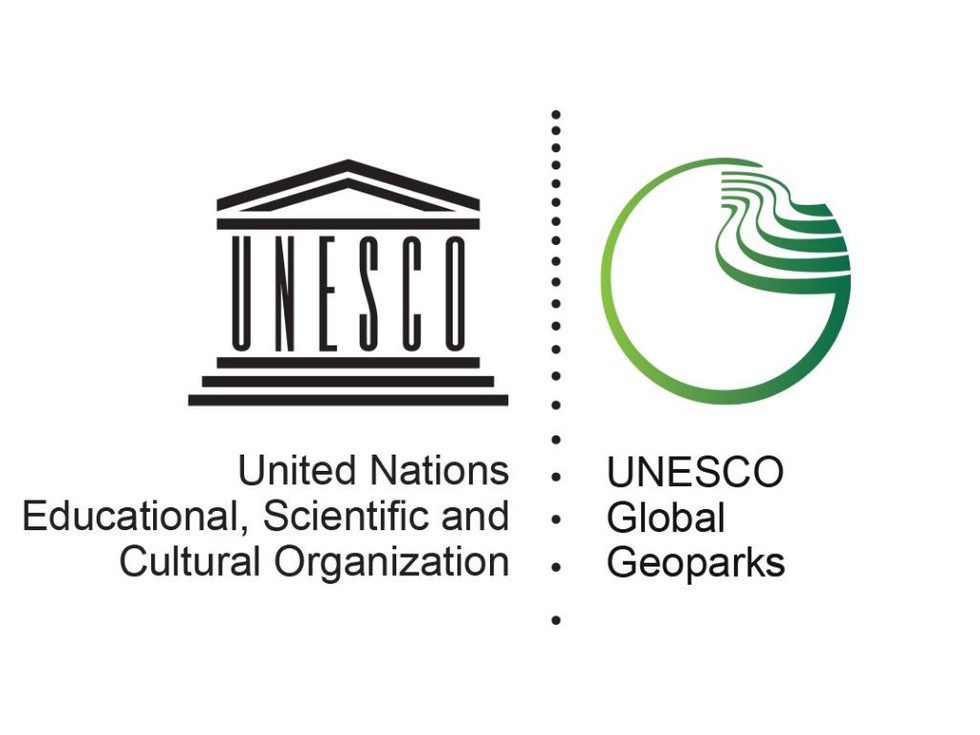
About UNESCO Global Geoparks Network:
- These are single, unified geographical areas where sites and landscapes of international geological significance are managed with a holistic concept of protection, education and sustainable development.
- The UNESCO Global Geopark designation was created in 2015 and recognizes “geological heritage of international significance”. These comprise a number of geological heritage sites of special scientific importance, rarity or beauty.
- The establishment of a UNESCO Global Geopark is a bottom-up process involving a strong local multiple partnership with long-term public and political support.
- It is not a formal legislative designation, though the defining geological heritage sites within a UNESCO Global Geopark must be protected under indigenous, local, regional or national legislation as appropriate.
- This status does not imply restrictions on any economic activity inside a UNESCO Global Geopark where that activity complies with indigenous, local, regional and/or national legislation.
- Recognition Period: A UNESCO Global Geopark is given this designation for a period of four years after which the functioning of the site re-examined during a revalidation process.
- Restrictions: The selling or destruction of the geological value of a UNESCO Global Geopark or of material either from within the Geopark or from anywhere else in the world is not permitted.
Global Geoparks Network:
- It is a non-profit International Association officially established in 2014 subject to French legislation. It is the official partner of UNESCO for the operation of the UNESCO Global Geoparks.
March 30, 2024
Prelims Pointers
March 30, 2024
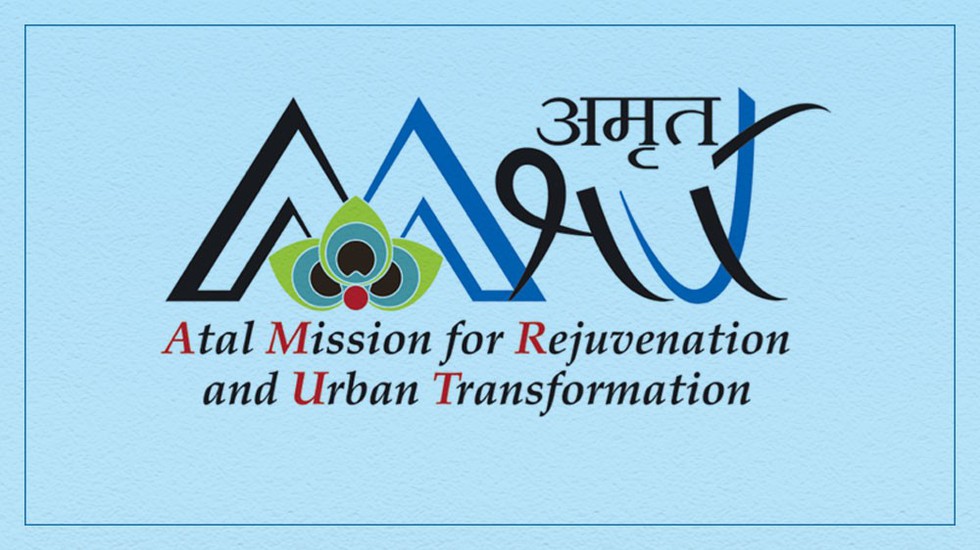
About AMRUT Scheme:
- It was launched by the Ministry of Housing and Urban Affairs in 2015, in 500 selected cities and towns across the country. It has been subsumed under AMRUT 2.0 in 2021.
- It focuses on development of basic infrastructure in the selected cities and towns in the sectors of water supply, sewerage and septage management, storm water drainage, green spaces and parks, and non-motorized urban transport. A set of Urban Reforms and Capacity Building have been included in the mission.
- AMRUT 2.0, which was launched for a period 2021-26, is designed to provide universal coverage of water supply through functional taps to all households in all the statutory towns in the country and coverage of sewerage/septage management in 500 cities covered in the first phase of the AMRUT scheme.
- AMRUT 2.0 will promote a circular economy of water through the development of City Water Balance Plan (CWBP) for each city focusing on recycle/reuse of treated sewage, the rejuvenation of water bodies, and water conservation.
- It will help cities to identify scope for projects focusing on universal coverage of functional water tap connections, water source conservation, rejuvenation of water bodies and wells, recycle/reuse of treated used water, and rainwater harvesting.
- It also has a reform agenda on ease of living of citizens through reduction of non-revenue water, recycle of treated used water, rejuvenation of water bodies, augmenting double entry accounting system, urban planning, strengthening urban finance etc.
- Other components of AMRUT 2.0 are:
- Pey Jal Survekshan to ascertain equitable distribution of water, reuse of wastewater, mapping of water bodies and promote healthy competition among the cities /towns.
- Technology Sub-Mission for water to leverage latest global technologies in the field of water.
- Information, Education, and Communication (IEC) campaign to spread awareness among the masses about conservation of water.
- The total indicative outlay for AMRUT 2.0 is ₹2,99,000 crore including Central share of ₹76,760 crore for five years.
Prelims Pointers
March 30, 2024
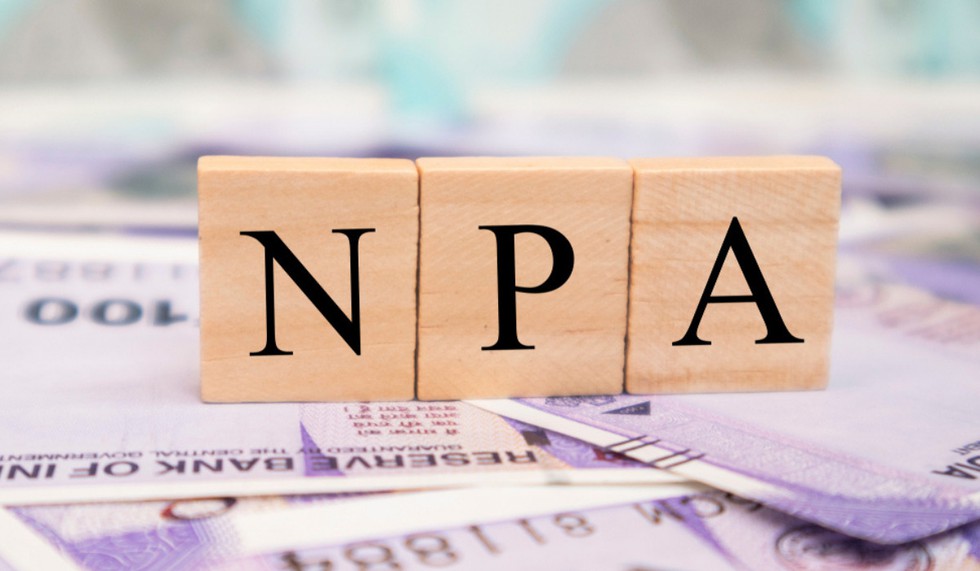
About Non-Performing Asset (NPA):
- A NPA is a loan or advance for which the principal or interest payment remained overdue for a period of 90 days. They can include various types of loans, such as personal loans, business loans, mortgages and credit card debt.
- When the ratio of NPAs in a bank's loan portfolio rises, its income and profitability fall, its capacity to lend falls and the possibility of loan defaults and write-offs rise.
- Types of NPAs: Different types of NPAs depend on how long they remain in the NPA category
- Sub-Standard Assets: An asset is classified as a sub-standard asset if it remains as an NPA for a period less than or equal to 12 months.
- Doubtful Assets: An asset is classified as a doubtful asset if it remains as an NPA for more than 12 months.
- Loss Assets: An asset is considered a loss asset when it is “uncollectible” or has such little value that its continuance as a bankable asset is not suggested. However, some recovery value may be left in it as the asset has not been written off wholly or in parts.
- NPA Provisioning:
- Provisioning means an amount that the banks set aside from their profits or income in a particular quarter for non-performing assets, such as assets that may turn into losses in the future.
- It is a method by which banks provide for bad assets and maintain a healthy book of accounts. It is done according to which category the asset belongs.
- Gross non-performing assets (GNPA) and Net non-performing assets (NNPA): Banks are required to make their NPA numbers public and to the RBI from time to time. There are primarily two metrics that help us understand any bank's NPA situation.
- GNPA: GNPA is an absolute amount. It tells you the total value of gross non-performing assets for the bank in a particular quarter or financial year, as the case may be.
- NNPA: NNPA subtracts the provisions made by the bank from the GNPA. Therefore, net NPA gives you the exact value of non-performing assets after the bank has made specific provisions.
- The NNPA is a measure of the actual losses that a bank has incurred on its NPAs. A high NNPA indicates that a bank has incurred large losses on its NPAs.
Prelims Pointers
March 30, 2024
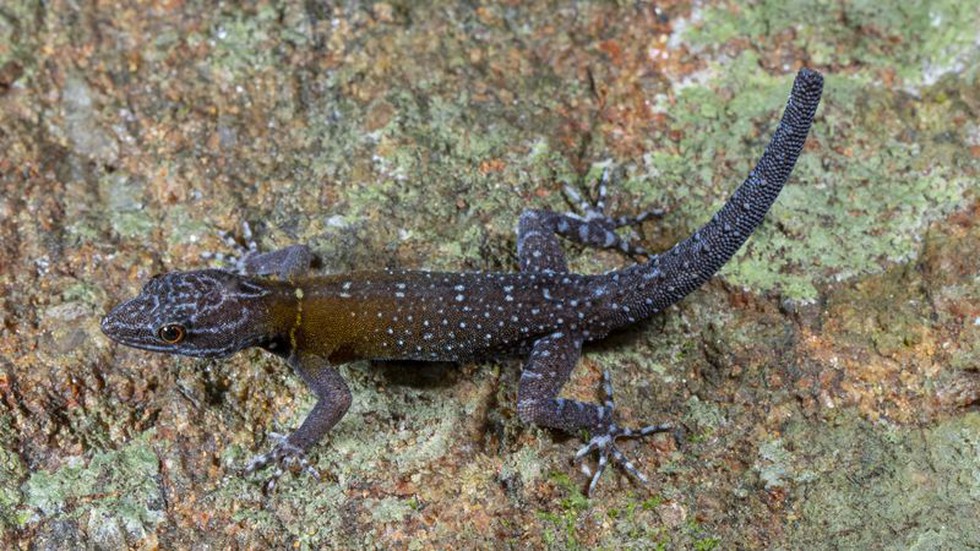
About Cnemaspis vangoghi:
- It is a new species of lizard discovered from the Southern Western Ghats in Tamil Nadu. It is named for Dutch painter Vincent Van Gogh (1853–1890), as the striking colouration of the new species is reminiscent of one of his most iconic paintings, The Starry Night.
- It is described as a small-sized gecko and has a distinctive yellow head and forebody, adorned with light blue spots on the back. It prefers living among rocks and can occasionally be found on buildings and trees.
- Both species inhabit low-elevation, deciduous forests within the Srivilliputhur-Megamalai Tiger Reserve, adding to the five previously known endemic vertebrates of the region.
- These diurnal creatures are mainly active during the cooler hours of early morning and evening, predominantly found on rocks.
- Their restricted localities present an intriguing case of micro-endemism in low-elevation species. Micro-endemism refers to a phenomenon in ecology and biogeography where a species or a group of species are restricted to a very small geographic area, often on the scale of a few square kilometers or even less.
Prelims Pointers
March 30, 2024
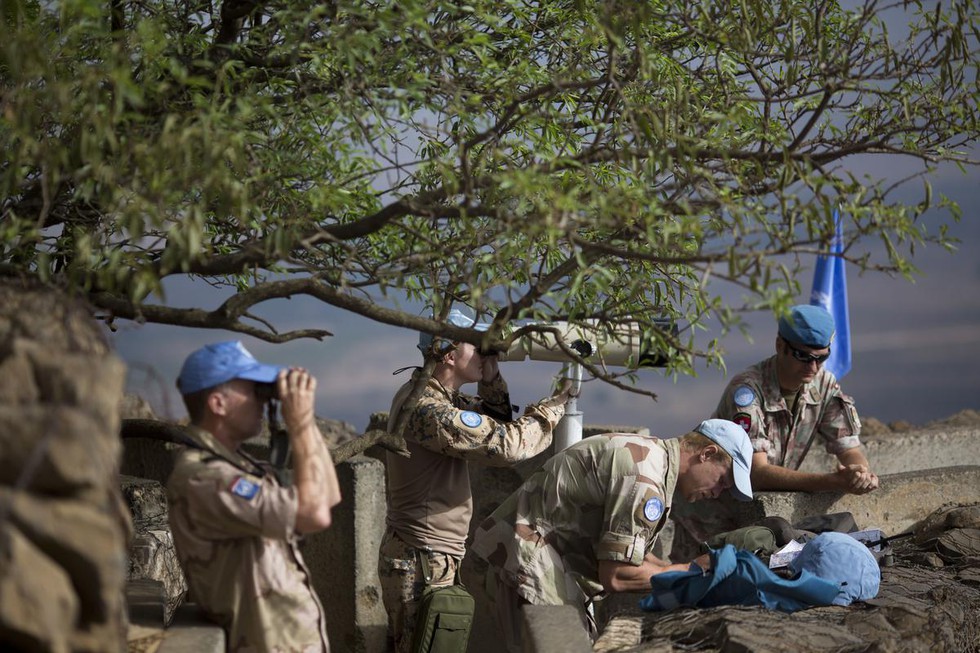
About ‘Group of Friends’ to Promote Accountability for Crimes Against Peacekeepers:
- It will seek to facilitate the promotion of accountability for all acts of violence against United Nations (UN) peacekeepers and seek facilitation of capacity building and technical assistance to the host state authorities. It was launched in 2022.
- It comprises of 40 member states. India, Bangladesh, Egypt, France, Morocco and Nepal are co-chairs.
- It will actively engage and share information with the UN Secretary-General and assist the member states hosting or those who have hosted peacekeeping operations, in bringing to justice the perpetrators of such acts; serve as an informal platform at the UN to exchange information, share best practices and mobilize resources directed at facilitating accountability for crimes committed against peacekeepers; and monitor progress on bringing accountability for crimes against peacekeepers.
- It will convene two meetings of its members per year, organise and host one event per year involving Permanent Missions and other stakeholders, to take the plan forward, thereby ensuring greater safety and security for peacekeepers.
- Group of Friends represents the "political will" of member states, particularly of the troop and police contributing countries, to champion the implementation of the provisions of U.N. Security Council resolution 2589, which was adopted in August 2021 under India’s Presidency of the Council.
- Resolution 2589had called upon member states, hosting or having hosted UN peacekeeping operations, to take all appropriate measures to bring to justice perpetrators of the killing of and all acts of violence against UN personnel, including, but not limited to, their detention and abduction.
India and UN Peacekeeping:
- India is the largest cumulative contributor of peacekeepers to the UN, having deployed more than 2,60,000 peacekeepers over the last seven decades.
- India has lost 177 of its peacekeepers in the line of duty, the largest by far from any troop-contributing country.
- With more than 6000 peacekeepers deployed in nine out of twelve peacekeeping missions, India is a strong proponent of accountability for crimes against peacekeepers.
Prelims Pointers
March 30, 2024
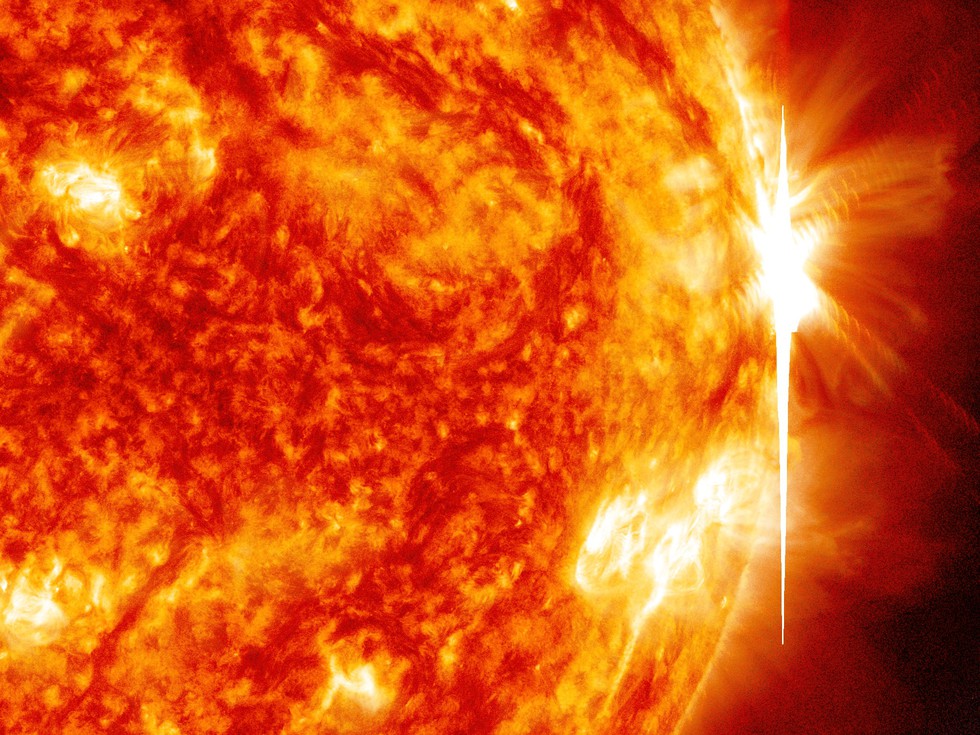
What are Solar Flares?
- Solar flares are large explosions that occur at the sun's surface when twisted magnetic field lines suddenly snap, emitting large bursts of electromagnetic radiation. They are seen as bright areas on the sun and they can last from minutes to hours.
- In a matter of just a few minutes, they heat the material to many millions of degrees and produce a burst of radiation across the electromagnetic spectrum, including from radio waves to x-rays and gamma rays.
- Although solar flares can be visible in white light, they are often more readily noticed via their bright X-ray and ultraviolet emissions.
- Effect of Solar Flare on Earth:
- The intense radiation emitted during a solar flare can affect satellite communications, disrupt radio signals and even pose a risk to astronauts in space.
- Additionally, the increased solar radiation can lead to geomagnetic storms, which may impact power grids and cause auroras (northern and southern lights).
About X-Class Solar Flares:
- Flares are classified according to their strength. The smallest ones are B-class, followed by C, M and X, the largest.
- Similar to the Richter scale for earthquakes, each letter represents a ten-fold increase in energy output. Within each letter class, there is a finer scale from 1 to 9.
- So, an X is 10 times an M and 100 times a C.
- C-class flares are too weak to noticeably affect Earth. M-class flares can cause brief radio blackouts at the poles and minor radiation storms that might endanger astronauts.
- The biggest X-class flares are by far the largest explosions in our solar system. X-class flares are most common during solar maximum.
Prelims Pointers
March 30, 2024
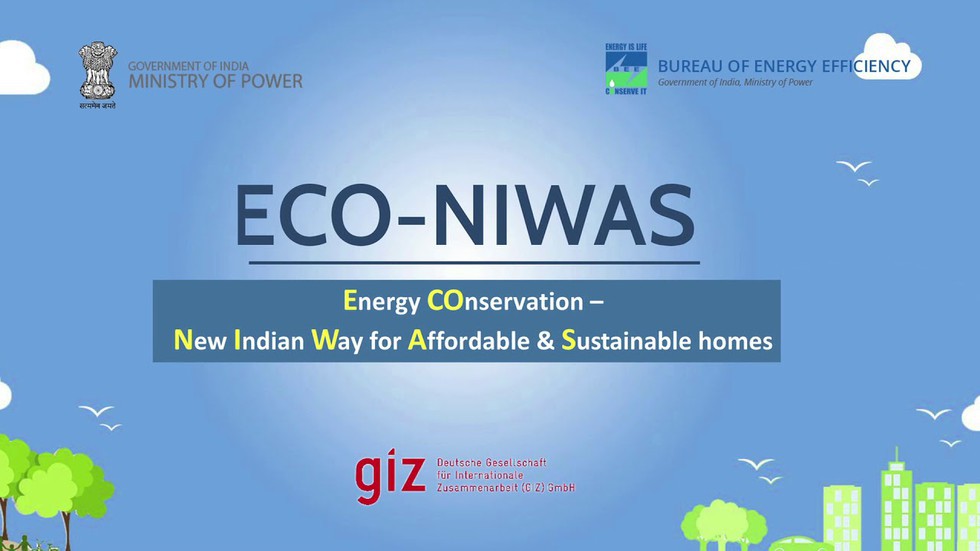
About Eco-Niwas Samhita:
- It is a Residential Energy Conservation Building code developed by Bureau of Energy Efficiency (BEE).
- The code sets standards to limit heat gain and loss and ensure adequate natural ventilation and day lighting potential.
- It was launched in two parts
- ENS 2018 (Part 1)sets minimum standards for building envelope designs for energy-efficient residential buildings.
- ENS Part 2 launched by the Bureau as ENS 2021 focuses on the building’s code compliance and electromechanical systems. It also addresses other aspects such as, Energy Efficiency in Electro-Mechanical Equipment for Building Operation, Renewable Energy Generation, Embodied Energy of Walling Materials and Structural Systems.
What is Residential Envelope Transmittance Value?
- It is a metric measuring heat transfer through a building’s envelope. Lower RETV values lead to cooler indoor environments and decreased energy usage. For optimal efficiency, improved occupant comfort and lower utility expenses, it’s recommended to maintain an RETV of 15W/m2 or less.
Prelims Pointers
March 30, 2024
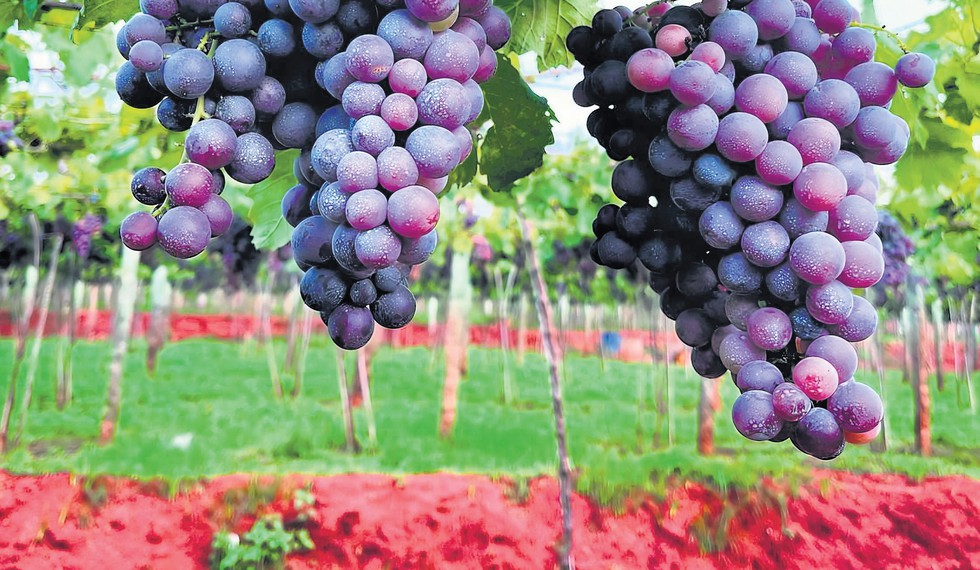
About Panneer Thiratchai:
- It is a grape variety mainly cultivated in the Cumbum valley of Tamil Nadu. A unique factor about ‘panneer’ grapes is that, these are harvested all through the year as against only during January and April in the rest of India.
- It is extremely popular among farmers because of quick growth and early maturity. The grapes grown are suitable for making wine, spirit, jams, canned grape juice and raisins.
- These grapes are rich in vitamins, tartaric acid and antioxidants and reduce the risk of some chronic diseases. They are also known for a superior taste apart from the purplish-brown colour. It has received Geographical Indication Tag in 2023.
Key facts about the Cumbum valley:
- It is located at the Western Ghats in Tamil Nadu is known as the ‘Grapes city of South India’ and cultivates the Panneer Thratchai.
- This variety which is also known as Muscat Hamburg constitutes almost 85% of the grape-growing areas in Tamil Nadu.
Prelims Pointers
March 30, 2024
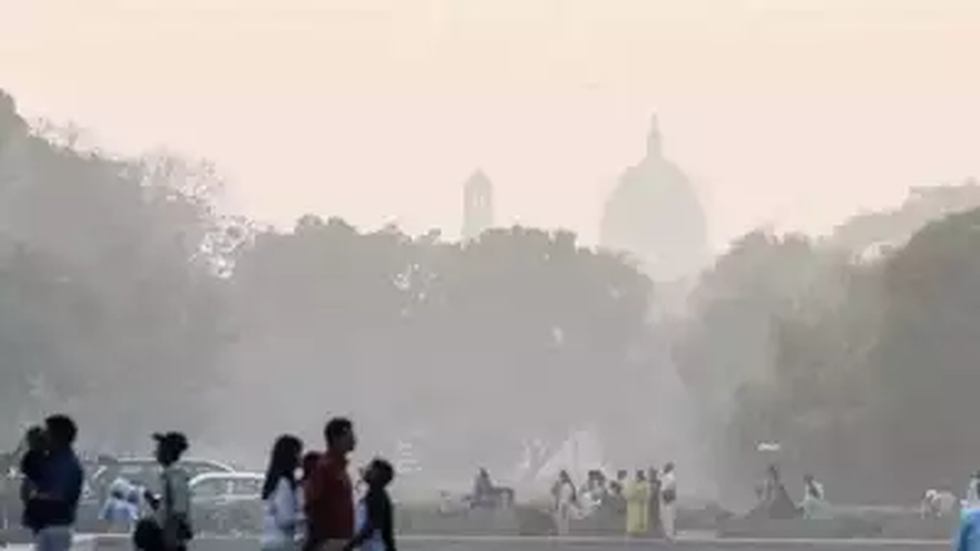
About Decision Support System:
- It is a numerical model-based framework to forecast Delhi’s air quality and sources of local and regional pollution which can impact the air. It is developed by Indian Institute of Tropical Meteorology (IITM) Pune.
- It provides quantitative information about:
- The contribution of emissions from Delhi and the surrounding 19 districts
- The contribution of emissions from 8 different emission sectors in Delhi
- The contribution from biomass-burning activities in the neighboring states
- The effects of possible emission source-level interventions on the forecast
- The system, which works only in winter and is stopped from March to August.
- The two models — System of Air Quality and Weather Forecasting And Research (Safar) and DSS — had temporarily stopped sharing data on air pollution for the country as there were differences between their forecasts and source contribution.
Prelims Pointers
March 30, 2024

Why in news?
- The DoT said that it has come to its notice that USSD based call forwarding facility, most commonly known *401# services for unconditional call forwarding services, is being misused for some unwarranted activities.
About Unstructured Supplementary Service Data (USSD):
- It is a communications protocol used in Global System for Mobile Communications (GSM) networks for sending short text messages.
- It is an instant messaging service and messages are not stored on the operator side or on the subscriber’s device.
- USSD format: It generally exist as one of two types, depending on their origin:
- A USSD Pull is an outgoing request from the user in the form of an MMI command.
- A USSD Push is a message from the operator that is displayed on the user’s screen.
- The user can send the operator a request in the form of a USSD command. Commands consist of the * and # characters and numeric codes.
- The chain begins with * or # (which can occur more than once, separating commands from subcommands) and usually ends with #.
- The maximum length of a USSD message is 182 characters, but in practice even the longest requests rarely exceed 20.
- It is used to display balance deduction in mobile phones where a message pops-up on the device screen after a call or outgoing SMS. It is also used for checking IMEI numbers of mobiles.
Prelims Pointers
March 30, 2024
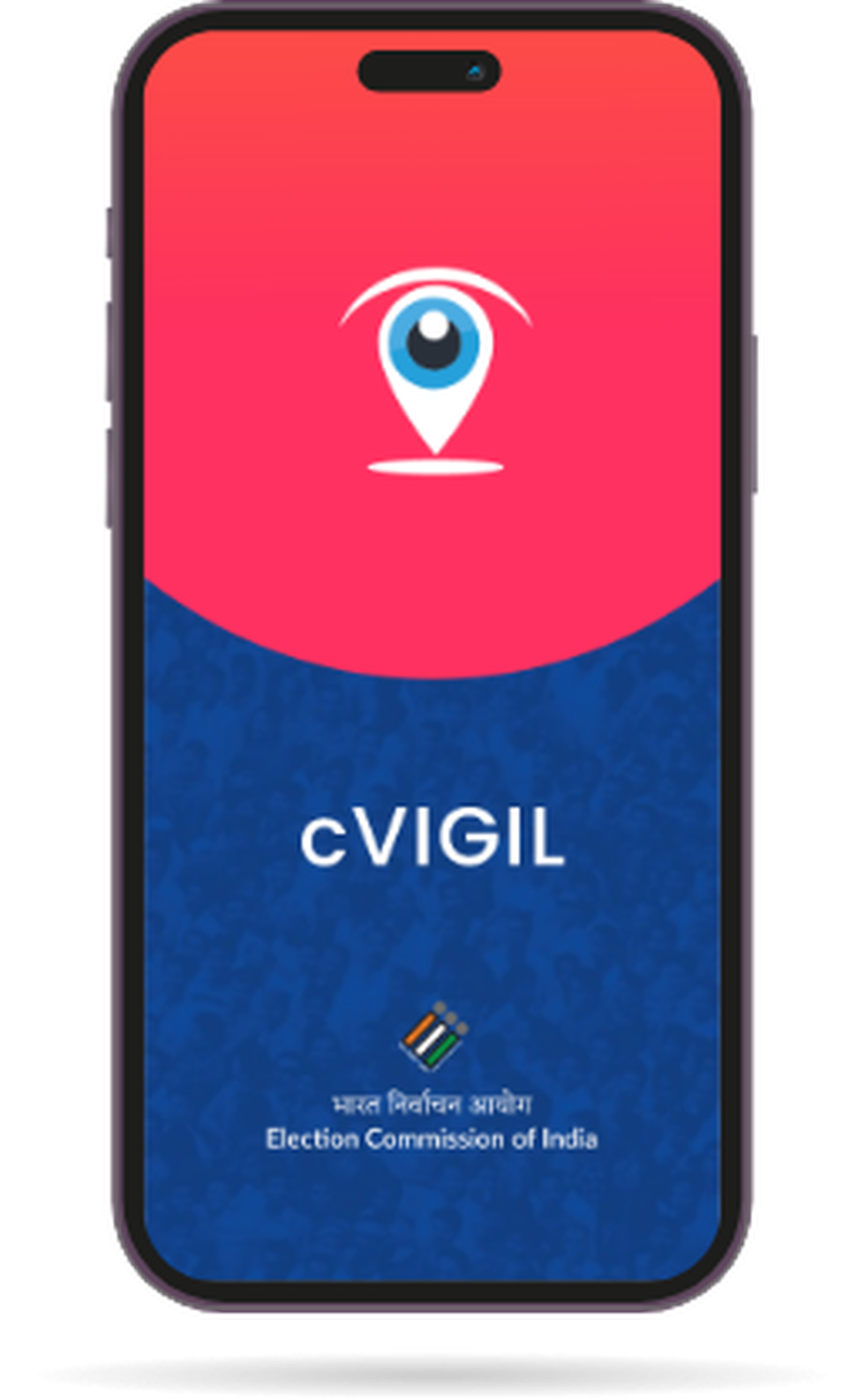
About C-Vigil app:
- It is a mobile application developed by the Election Commission of India (ECI) to enable citizens to report violations of the Model Code of Conduct (MCC) during elections.
- Features of the app:
- It is user-friendly and easy to operate application, which connects vigilant citizens with the District Control Room, Returning Officer and Flying Squads Teams.
- By using this app, the citizens can immediately report on incidents of political misconduct within minutes and without having to rush to the office of the returning officer.
- As soon as the complaint is sent on the cVigil app, the complainant will receive a unique ID through which the person will be able to track the complaint on their mobile.
- Users capture audios, photos or videos in real-time, and a “100-minute” countdown for time-bound response to complaints is ensured.
- The app automatically enables a geo-tagging feature as soon as the user switches on their camera in the cVIGIL to report a violation. This means that flying squads could know the precise location of a reported violation and the image captured by citizens could be used as evidence in the court of law.
- It uses GPS to track the location of the violation. It allows users to capture the live incidents only. It has a feature to report the case of MCC violation anonymously.
March 29, 2024
Prelims Pointers
March 29, 2024

What is Money Laundering?
- PMLA defines money laundering as an act of directly or indirectly attempting to indulge or knowingly assisting or knowingly being a party or actually involved in concealing, possessing, acquiring, using, projecting as untainted property, or claiming as untainted property, in any manner whatsoever, the proceeds of crime.
- It is defined as the process through which an illegal fund, such as black money, is obtained from illegal activities and disguised as legal money, eventually portrayed as white money.
About Prevention of Money Laundering Act (PMLA), 2002:
- It is an act to prevent money laundering and to provide for the confiscation of property derived from or involved in money laundering.
- The Act was formulated for the following objectives:
- Prevent money-laundering.
- Combat/prevent the channelising of money into illegal activities and economic crimes.
- Provide for the confiscation of property derived from, or involved/used in, money laundering.
- Penalise the offenders of money laundering offences.
- Appointing an adjudicating authority and appellate tribunal for taking charge of money laundering matters.
- Provide for matters connected and incidental to the acts of money laundering.
- The Enforcement Directorate (ED)in the Department of Revenue, Ministry of Finance, is responsible for investigating the offences of money laundering under the PMLA.
- Financial Intelligence Unit–India (FIU-IND), under the Department of Revenue, is the central national agency responsible for receiving, processing, analyzing and disseminating information relating to suspect financial transactions.
- The scheduled offences are separately investigated by the agencies mentioned under respective acts, for example, the local police, CBI, customs departments, SEBI or any other investigative agency, as the case may be.
- Actions that can be initiated against the person involved in money laundering:
- Seizure/freezing of property and records and attachment of property obtained with the proceeds of crime.
- Any person who commits the offence of money laundering shall be punishable with rigorous imprisonment for a minimum term of three years, and this may extend up to seven years and fine (without any limit).
- The PMLA and rules notified thereunder impose obligations on banking companies, financial institutions, and intermediaries and persons carrying on a designated business or profession, to verify identity of clients, maintain records and furnish information to FIU-IND.
Prelims Pointers
March 29, 2024
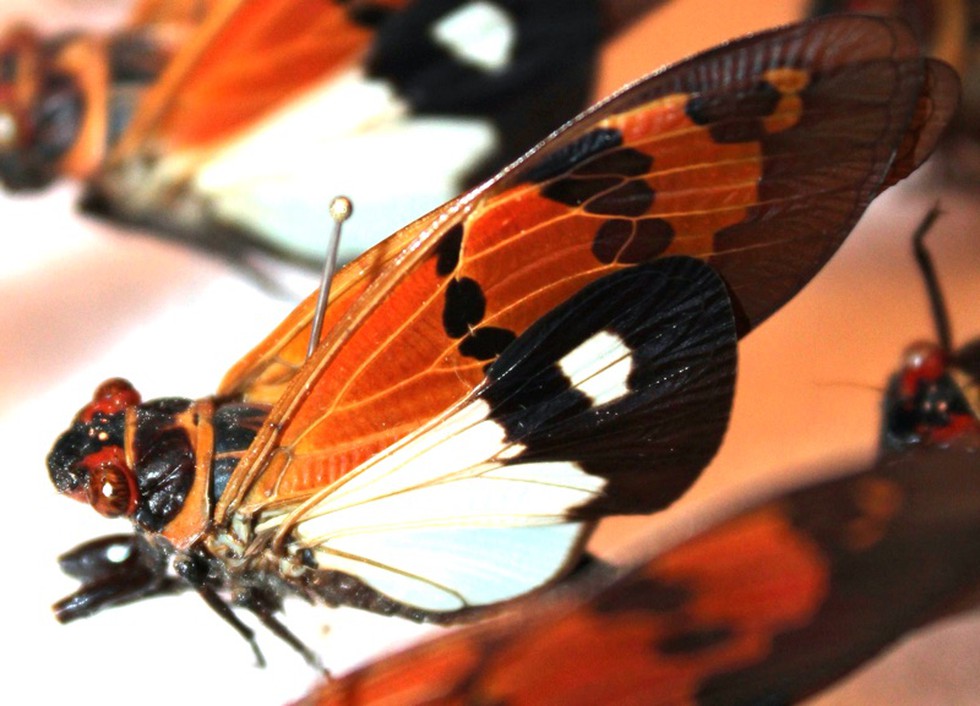
About Butterfly Cicada:
- It is a newly discovered species of cicada belonging to the genus Becquartina. It brings the total number of known species in the genus Becquartina to seven.
- It was discovered in Meghalaya. It marks the first-ever record of this genus in the country.
- The colorful wings of the cicada earned it the nickname “butterfly cicada”, with the species name “bicolour” reflecting its two distinct colour forms.
- Features:
- The species is localised in the Garo Hills preferring thick forests and native vegetation. The basal one-third of the hind wing is rich saffron and the apical two-thirds are matte black with prominent rich saffron squarish spots.
What are Cicadas?
- Cicada, (family Cicadidae) is any of a group of sound-producing insects. They have two pairs of membranous wings, prominent compound eyes, and three simple eyes (ocelli).
- Cicadas are medium to large in size, ranging from 2 to 5 cm (0.8 to 2 inches). More than 3,000 species of cicadas are known. Most of them are tropical and occur in deserts, grasslands, and forests.
- Male cicadas produce loud noises by vibrating membranes (tymbals) near the base of the abdomen. Female cicadas usually lay their eggs in woody plant tissues that drop from the plant when, or shortly after, the eggs hatch.
Prelims Pointers
March 29, 2024

About SLAPP Suits:
- The term ‘SLAPP’, stands for Strategic Lawsuit Against Public Participation. The concept of a SLAPP lawsuit evolved in the US, where it was observed that certain lawsuits were filed targeting individual or group litigants who voiced their concern over important or considerable social issues in the public arena.
- The subject matter of the suit would target an act of public participation, such as engaging in an issue of societal or political significance, in the form of journalism, advocacy, whistleblowing, peaceful protests or boycotts, activism, or simply speaking out against abuse of power.
- As such, winning the lawsuit is not the focus. The plaintiff’s goal is typically accomplished if the defendant succumbs to fear, intimidation, mounting legal costs or simple exhaustion and abandons the criticism.
- The remedies sought are usually substantial amounts of damages and generally aggressive or disproportionate to the subject matter of the dispute.
- SLAPP suits are routinely filed for libel, slander, defamation, abuse of process, malicious prosecution, conspiracy, invasion of privacy, and tortious interference with contract or business relationships.
- The most common SLAPP suits have often involved a powerful corporation suing local citizens for speaking against their company.
Prelims Pointers
March 29, 2024

About Drugs and Cosmetics Act, 1940:
- It regulates the import, manufacture and sale or distribution of drugs and cosmetics through licences and permits.
- Its main objective is to ensure that the drugs and cosmetics marketed in India are reliable, efficient and in compliance with national standards.
- The associated Drugs and Cosmetics Rules, 1945, which were formulated in association with the 1940 Act, provide provisions for classifying medications into schedules and instructions for the storage, sale, presentation, and prescription of each schedule.
- What is a drug?
- A drug includes medicines or medical devices for external or internal use for human beings or animals, and all substances intended to be used for or in the diagnosis, treatment, mitigation, or prevention of any disease or disorder in human beings or animals.
- Drugs are extracts of certain plants, animal parts, herbs, or minerals. A drug is any chemical substance (natural or man-made) that alters biological structure or functioning when absorbed.
- What is a cosmetic? The term cosmetic refers to any substance or product used to rub, pour, sprinkle or spray on, or introduce into, or otherwise apply to, the body or any part of any object for cleansing, beautifying, or improving the appearance.
- Objectives:
- It oversees medication imports into India, ensuring that no substandard or counterfeit drugs enter the country.
- It prohibits the production of inferior or counterfeit pharmaceuticals in the country.
- It requires only qualified and competent personnel to sell and distribute medicines, as well as the manufacture, sale, and distribution of Ayurvedic, Siddha, Unani, and Homeopathic drugs.
- The provisions of the Act control the import, manufacture, sale, and distribution of cosmetics.
- To have drug inspectors visit licensed premises regularly. Monitoring pharmaceutical and cosmetic standards by collecting samples and analyzing them in accredited laboratories.
- Creating distinctive regulations to control the manufacture, standardization, and storage of biological and special products, as well as prescribing how different types of drugs and cosmetics should be labeled and packed.
- To form a Drugs Technical Advisory Board (DTAB) and Drugs Consultative Committees (DCC)for allopathic and allied drugs, as well as cosmetics.
- Salient Features:
- The maximum penalty is life imprisonment and a fine of Rs. 10 lakhs or three times the confiscated goods’ value, whichever is greater.
- Other gazette officers, in addition to officers from the Drug Controller’s Office, are authorised to initiate prosecution under the Act; some of the offences are cognizable and non-bailable;
- Specialised courts for the trial of offences covered by the Act;
- Provision for the aggregation of minor offences.
Prelims Pointers
March 29, 2024

About Section 120B of the IPC:
- Section 120A of the IPC defines the offence of criminal conspiracy. Section 120B of the IPC, on the other hand, defines the punishment for criminal conspiracy.
- Criminal Conspiracy under IPC is an agreement between two or more persons to commit an illegal act or to commit a lawful act by illegal means. In other words, it is a criminal offence where two or more individuals agree to plan and execute a criminal act.
- Section 120A of the IPC states: “When two or more persons agree to do or cause to be done, an illegal act or an act which is not illegal by illegal means, such an agreement is designated a criminal conspiracy”.
- For a conspiracy to be established, there must be an agreement between the conspirators, a common intention to commit an illegal act, and an overt act in furtherance of that intention.
- The agreement does not have to be in writing or expressed verbally; it can be inferred from the conduct of the parties.
- The Doctrine of Agency in a Criminal Conspiracy:
- It is said that a criminal conspiracy is a partnership in crime because every member involved is a joint and mutual agent to each other for the common purpose, i.e., execution of the conspired crime.
- By this doctrine of agency, the law contemplates that the act of one of the members in the conspiracy is deemed as the act by each of them, due to all members being equally liable.
- Punishment for Criminal Conspiracy:
- Under the purview of IPC 120B, conspiracy is divided into two categories depending on the nature, gravity and punishment for the said offences. Also, whether the case is bailable or not, depends on the above-mentioned circumstances.
- In the first part, it states that if the conspiracy is to commit an offence of serious nature, an offence which is punishable with death imprisonment, imprisonment for life, or with rigorous imprisonment for at least a term of 2 years or more, or if there is no punishment mentioned in the code for the offence committed, such person shall be treated in the same manner as of the offence committed and abetted by him.
- Whereas, in the other part of Section 120B, conspiracy other than the offence committed under the first part, conspiracy to commit an illegal act is covered. In this kind of case, the section provides a uniform punishment, which means imprisonment of either description for a term which may extend up to six months, a fine, or both.
Prelims Pointers
March 29, 2024
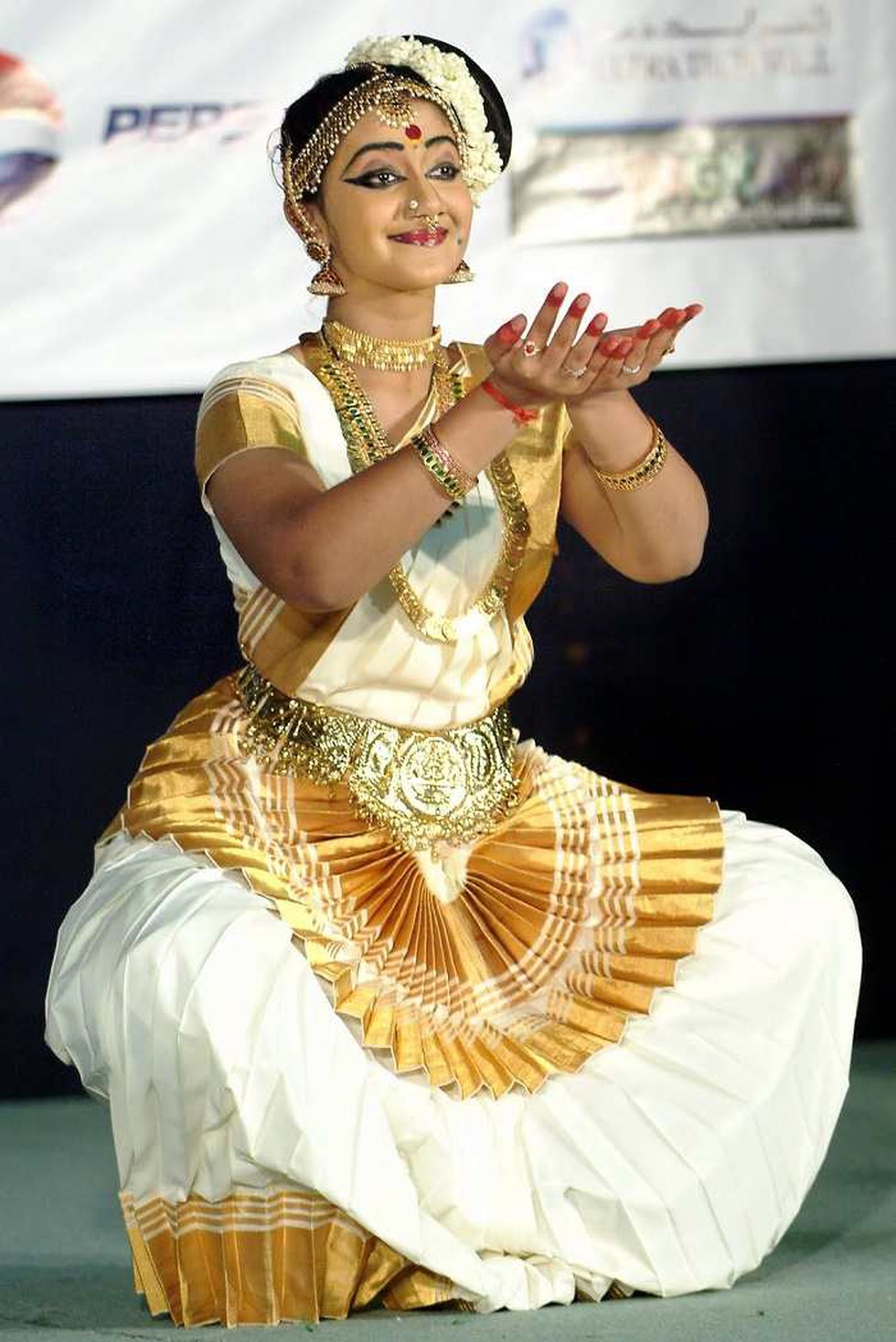
About Mohiniyattam:
- It is an Indian classical dance form that evolved in the state of Kerala.
- History and Evolution:
- Its roots date back to the age-old Sanskrit Hindu text on performing arts called ‘Natya Shastra’.
- It is used to be performed by Devadasis (temple dancers) in temples during the rule of the Chera kings from 9 to 12 C.E.
- Features:
- It is conventionally a solo dance performed by female artists. It adheres to the Lasya type that showcases a more graceful, gentle and feminine form of dancing.
- Theme: The dance form Mohiniyattam has love and devotion to God as its major themes, with usually Lord Vishnu or his incarnation Lord Krishna as the lead character.
- It emotes a play through dancing and singing, where the song is customarily in Manipravala, which is a mix of Sanskrit and Malayalam language.
- The recitation may be performed by the dancer or a vocalist, with the music style being Carnatic. The dance is characterized by its graceful swaying body movements with no abrupt jerks or sudden leaps.
- More than the footwork, emphasis is given to hand gestures and Mukhabhinaya or subtle facial expressions. The hand gestures, 24 in number, are mainly adopted from ‘Hastha Lakshana Deepika’, a text followed by Kathakali.
- Costumes in Mohiniyattam include plain white or ivory cream traditional sari embroidered with bright gold-laced brocade.
- Instruments used: Mridangam, Madhalam, ldakka, flute, Veena and Kuzhitalam(cymbals).
Prelims Pointers
March 29, 2024
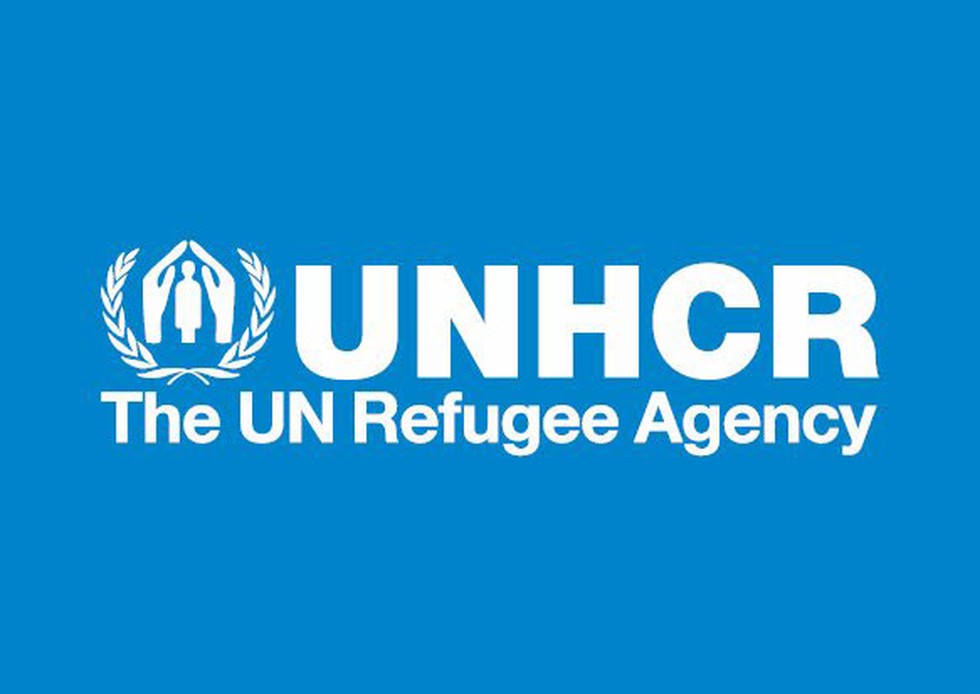
About United Nations High Commissioner for Refugees:
- It protects refugees worldwide and facilitates their return home or resettlement. Headquarters: Geneva, Switzerland
- It was established by the General Assembly of the United Nations in 1950 in the aftermath of the Second World War to help the millions of people who had lost their homes.
- It is a global organization dedicated to saving lives, protecting rights and building a better future for people forced to flee their homes because of conflict and persecution.
- It was awarded Nobel Peace Prizes in 1954 and 1981. It started Nansen Refugee Award in 1954 for recognition of outstanding service to the cause of refugees, displaced or stateless people.
Who are the Rohingya refugees?
- The Rohingya are a Muslim minority ethnic group with their roots in the Arakan kingdom in Myanmar.
- According to the Council on Foreign Relations notes that Rohang derives from the word ‘Arakan’ in the Rohingya dialect and ga or gya means from.
- They are culturally and religiously distinct from the majority Buddhist population in Myanmar and speak a Bengali dialect which is different from the common Burmese language. Myanmar has refused to recognise them as an ethnic group, denying them citizenship since 1982.
- According to Myanmar’s 1982 citizenship law, members of the Rohingya community, along with other ethnic minorities, can only attain citizenship if they prove their ancestors resided in Myanmar before 1823.
- Otherwise, even if one of their parents is a Myanmar citizen, they are deemed to be “resident foreigners” or “associate citizens.”
Prelims Pointers
March 29, 2024
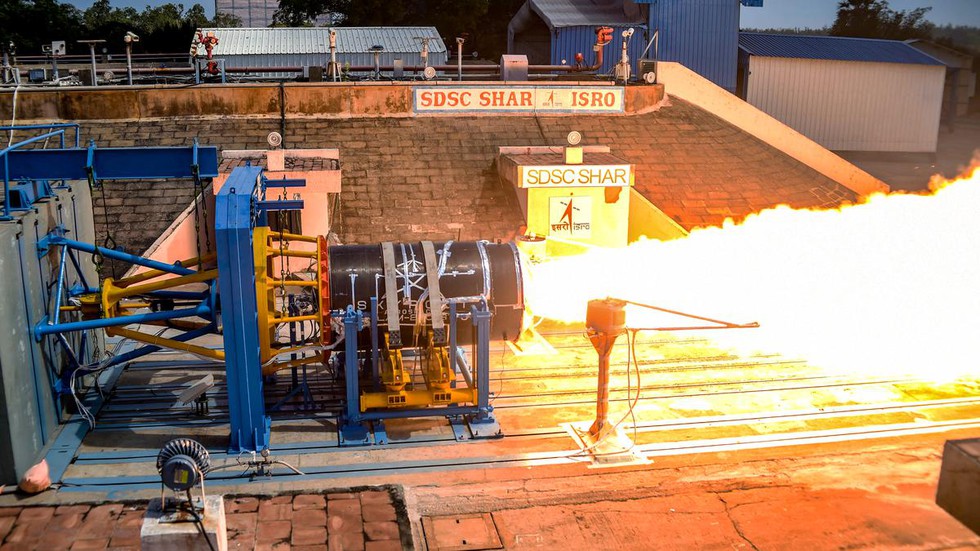
About Kalam-250:
- It is a stage-2 of Vikram-1 space launch vehicle. It is a high-strength carbon composite rocket motor, which uses solid fuel and a high-performance Ethylene-Propylene-Diene terpolymers (EPDM) thermal protection system (TPS).
- The stage includes a carbon ablative flex nozzle along with high-precision electro-mechanical actuators for thrust vector control of the vehicle, aiding in achieving the desired trajectory.
- The second stage of Vikram-1 will play a crucial role in the ascent of the launch vehicle, propelling it from the atmosphere to the deep vacuum of outer space.
Key facts about the Vikram-1 Rocket:
- It is named after the father of India’s space programme, Vikram Sarabhai and is a multi-stage launch vehicle with a capacity to place around 300 kg of payloads in low-earth orbit.
- It has been built by Hyderabad-based Skyroot Aerospace. It is an all-carbon-fibre-bodied rocket that can place multiple satellites into orbit.
- Being a solid-fuel rocket and using relatively simpler technologies would mean that launching this vehicle would require minimal infrastructure and that the rocket could be assembled and launched within 24 hours from any site.
Prelims Pointers
March 29, 2024
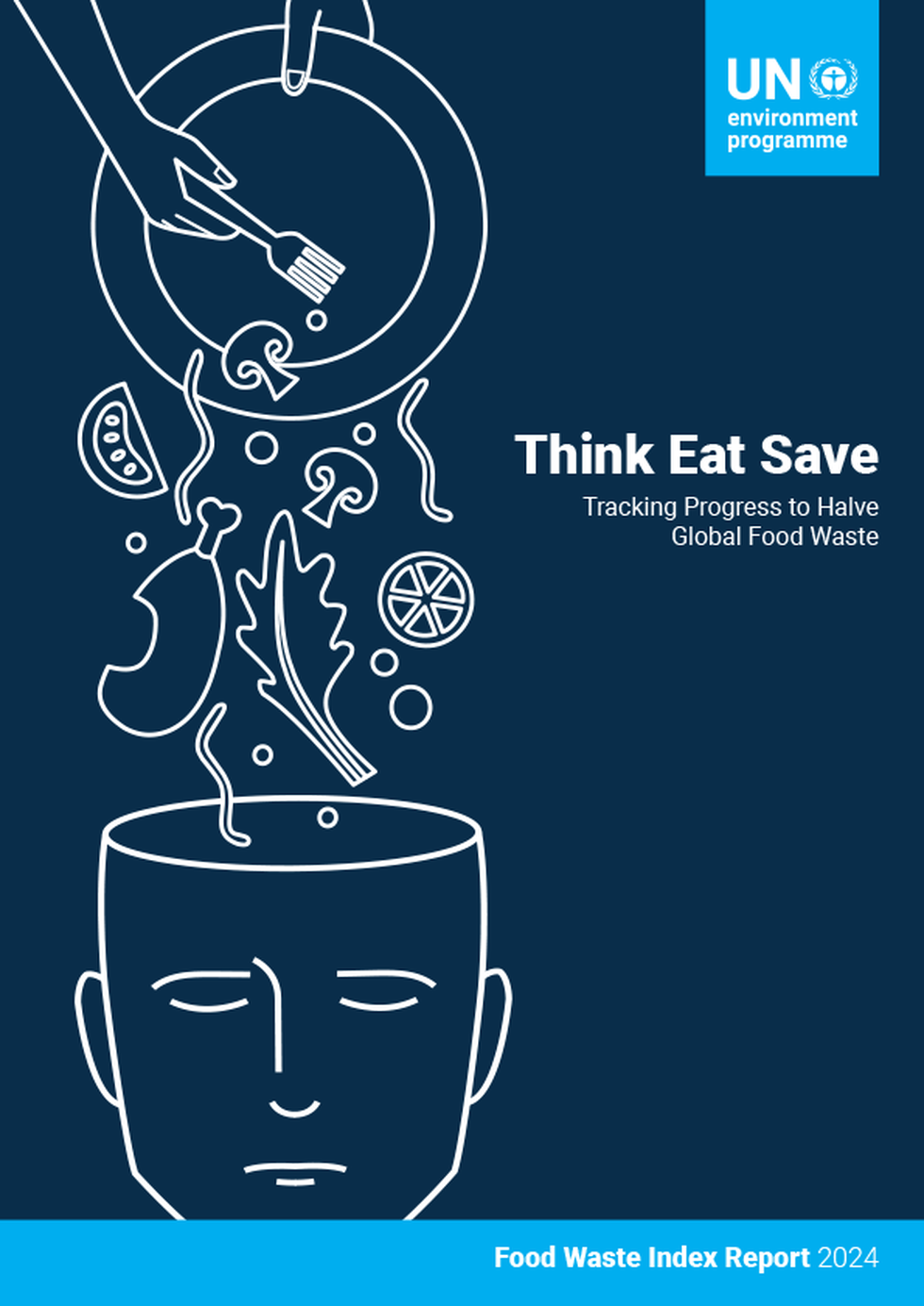
About Food Waste Index Report 2024:
- It a study jointly authored by the United Nations Environment Programme (UNEP) and WRAP (Waste and Resources Action Programme), a U.K.-based non-profit.
- It tracks the global and national generation of food and inedible parts wasted at the retail and consumer (household and food service) levels.
- Highlights of the report:
- The report defines “food waste” as “food and the associated inedible parts removed from the human food supply chain”.
- ‘‘Food loss” is defined as “all the crop and livestock human-edible commodity quantities that, directly or indirectly, completely exit the post-harvest/slaughter production/supply chain up to, and excluding, the retail level”.
- It noted that in 2022, there were 1.05 billion tonnes of food waste generated (including inedible parts), amounting to 132 kilograms per capita and almost one-fifth of all food available to consumers.
- Many low- and middle-income countries continue to lack adequate systems for tracking progress to meet Sustainable Development Goal 12.3 of halving food waste by 2030.
- At present, only four G-20 countries (Australia, Japan, U.K., U.S.) and the European Union have food waste estimates suitable for tracking progress.
- Hotter countries appear to generate more food waste per capita in households, potentially due to higher consumption of fresh foods with substantial inedible parts and a lack of robust cold chains.
- As compared to urban areas, rural ones generally wasted less food, due to “greater diversion of food scraps to pets, livestock and home composting”.
- As of 2022, only 21 countries had included food loss and/or waste reduction in their climate plans or Nationally Determined Contributions (NDCs).
Prelims Pointers
March 29, 2024
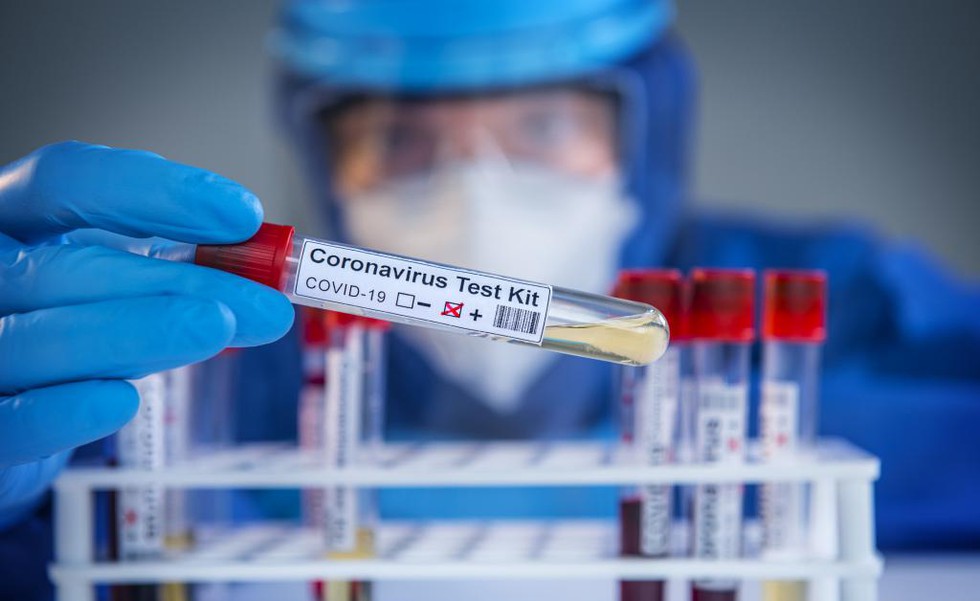
About CoViNet:
- It is a network of global laboratories with expertise in human, animal and environmental coronavirus surveillance. It will identify and monitor potentially novel coronaviruses that could emerge shortly.
- The network will now have animal health and environmental surveillance and timely risk assessment to feed WHO policies and protective measures.
- In low- and middle-income countries, CoViNet will support the building of more laboratories to monitor MERS-CoV and novel coronaviruses of public health importance.
- Data generated through CoViNet's efforts will guide the work of WHO's Technical Advisory Groups on Viral Evolution (TAG-VE) and Vaccine Composition (TAG-CO-VAC).
- It currently comprises 36 laboratories from 21 countries in all six WHO regions. Three Indian laboratories namely; the Council of Scientific and Industrial Research-National Environmental Engineering Research Institute, the Indian Council of Medical Research-National Institute of Virology in Pune, and the Translational Health Science and Technology Institute are part of this network.
Key facts about World Health Organisation (WHO):
- It was established in 1948, is a specialized agency of the United Nations that connects nations, partners and people to promote health.
- The governance structure of the WHO is designed to support the implementation of its mandate and the achievement of its objectives. It includes:
- Membership: It currently has 194 member states.
- World Health Assembly (WHA): The highest decision-making body of WHO and comprises representatives from all member States.
- Secretariat: Responsible for carrying out the policies and programs approved by the WHA.
- Director-General: Director-General heads the WHA and is supported by a senior management team.
- Regional Offices: WHO also has six regional offices: Africa, the Americas, Southeast Asia, Europe, Eastern Mediterranean and Western Pacific.
March 28, 2024
Prelims Pointers
March 28, 2024
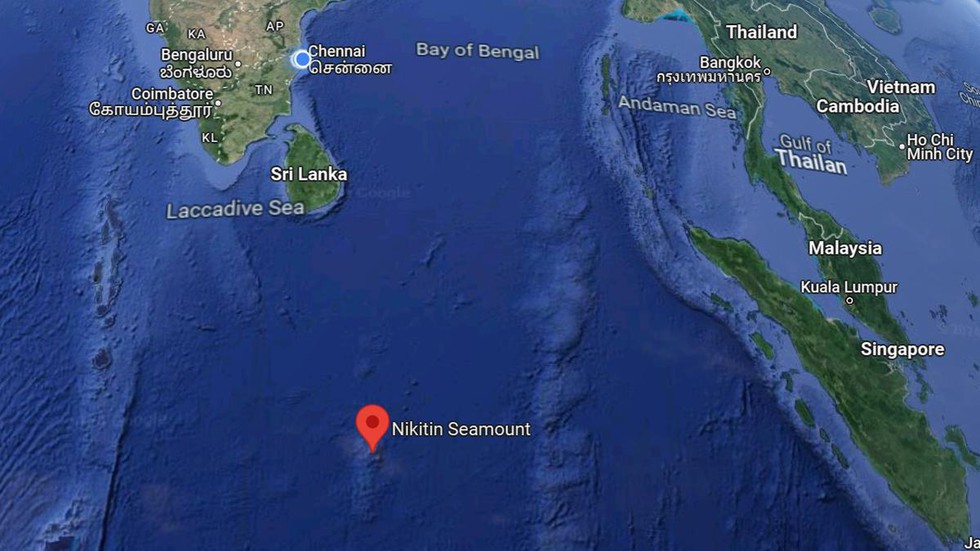
About Afanasy Nikitin Seamount:
- The AN Seamount is a structural feature in the Central Indian Basin, located about 3,000 km away from India’s coast.
- It comprises a main plateau, rising 1200 m above the surrounding ocean floor (4800m). It is rich in deposits of cobalt, nickel, manganese, and copper.
What is a Seamount?
- It is an underwater mountain formed through volcanic activity. These are recognised as hotspots for marine life.
- Like volcanoes on land, seamounts can be active, extinctor dormant volcanoes.
- These are formed near mid-ocean ridges, where the earth’s tectonic plates are moving apart, allowing molten rock to rise to the seafloor. The planet’s two most-studied mid-ocean ridges are the Mid-Atlantic Ridge and the East Pacific Rise.
- Some seamounts have also been found near intraplate hotspots—regions of heavy volcanic activity within a plate—and oceanic island chains with volcanic and seismic activity called island arcs.
- Significance of seamounts:
- They provide information about the mantle’s composition and how tectonic plates evolve.
- These are helpful in understanding their influence on how water circulates and absorbs heat and carbon dioxide.
- They are good places for life because they can cause localised ocean upwelling, the process by which nutrient-rich water from deep within the ocean moves up to the surface.
Prelims Pointers
March 28, 2024
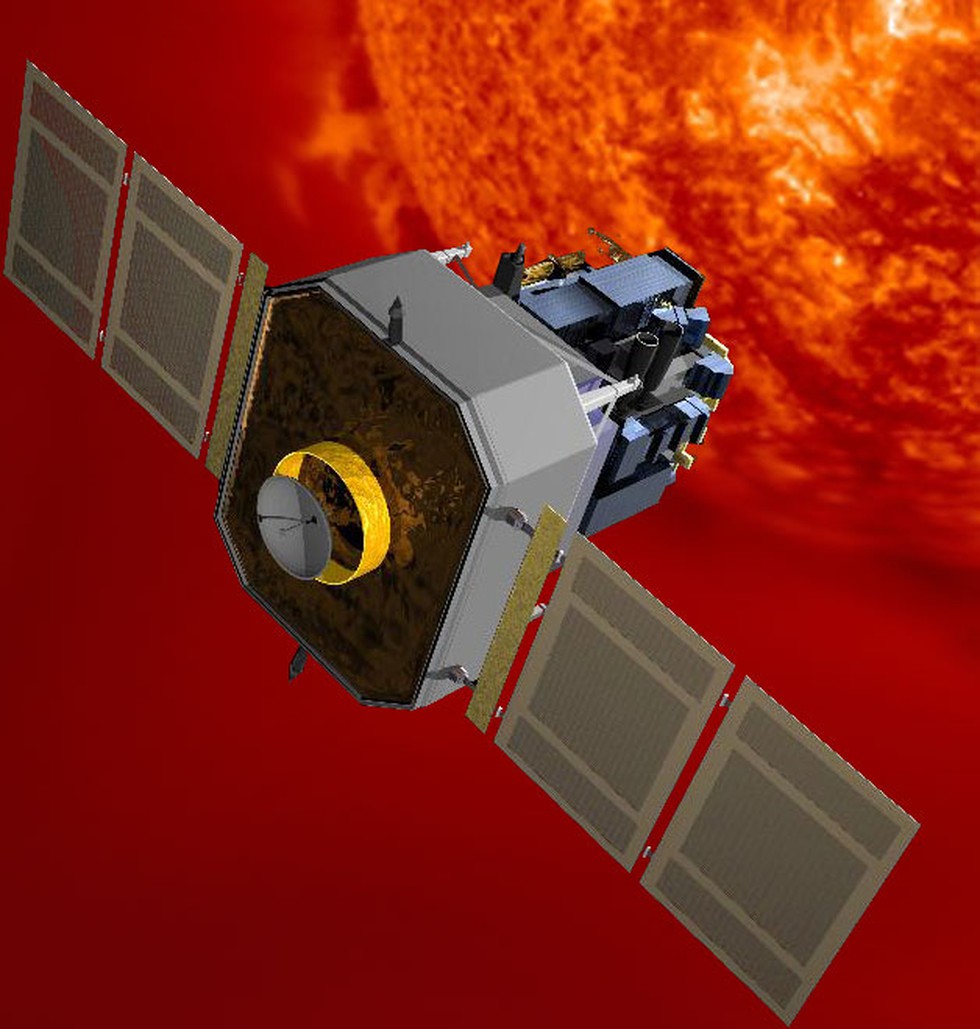
About Solar and Heliospheric Observatory (SOHO):
- It is a project of international collaboration between the European Space Agency (ESA) and the U.S. National Aeronautics and Space Administration (NASA). It was launched in December 1995, SOHO was designed to study the Sun.
- In order to provide continuous observations, it was maneuvered to orbit the first Lagrangian point (L1), a point some 1.5 million km (900,000 miles) from Earth toward the Sun where the gravitational attraction of Earth and the Sun, combine in such a way that a small body remains approximately at rest relative to both.
- It carries 12 scientific instruments to study the solar atmosphere, helioseismology and the solar wind.
- Though its mission was scheduled to run until only 1998, it has continued collecting data, adding to scientists' understanding of our closest star, and making many new discoveries, including thousands of comets. It is the longest-lived Sun-watching satellite to date.
Prelims Pointers
March 28, 2024
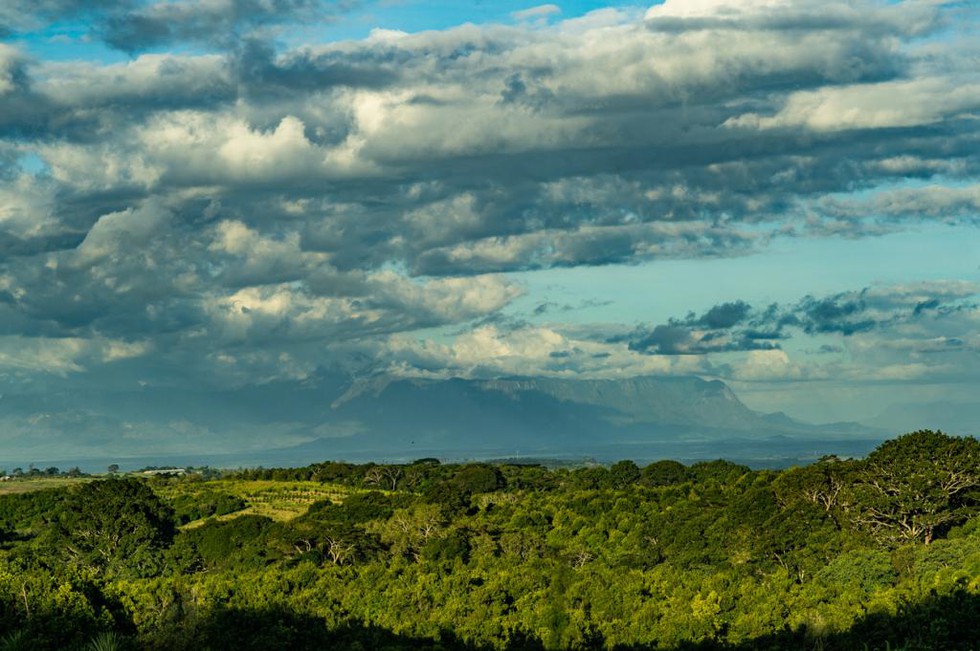
About South East Africa Montane Archipelago (SEAMA):
- It is a newly recognised mountainous ecoregion. It stretches across northern Mozambique to Mount Mulanje in Malawi, southern Africa’s second-highest mountain.
- The ecoregion encompasses 30 granitic inselbergs reaching > 1000 m above sea level, hosting the largest (Mt Mabu) and smallest (Mt Lico) mid-elevation rainforests in southern Africa, as well as biologically unique montane grasslands.
- SEAMA has distinctly higher annual rainfall and humidity, especially in the dry season, compared to surrounding regions.
- Since 2000, the SEAMA has lost 18% of its primary humid forest cover (up to 43% in some sites)—one of the highest deforestation rates in Africa.
- The major cause of montane forest loss in SEAMA is slash and burn shifting agricultural practices, typically used for subsistence food production by local communities, along with charcoal production, for household cooking, and as a source of revenue.
What are Inselbergs?
- Inselberg, or Monadnock, is an isolated, steep-sloped ridge, hill, or small mountain that stands above well-developed plains. It appears like an island rising from the sea.
- Inselbergs are generally erosional remnants. Often, inselbergs are composed of harder igneous rock (such as granite) that is more resistant to erosion. However, inselbergs may also form in sedimentary rocks.
- These structures are one of several varieties of landforms called paleoforms that can survive with little modification for tens of millions of years.
- In inselberg landscapes, the active erosional processes are confined to valley sides and valley floors.
Prelims Pointers
March 28, 2024
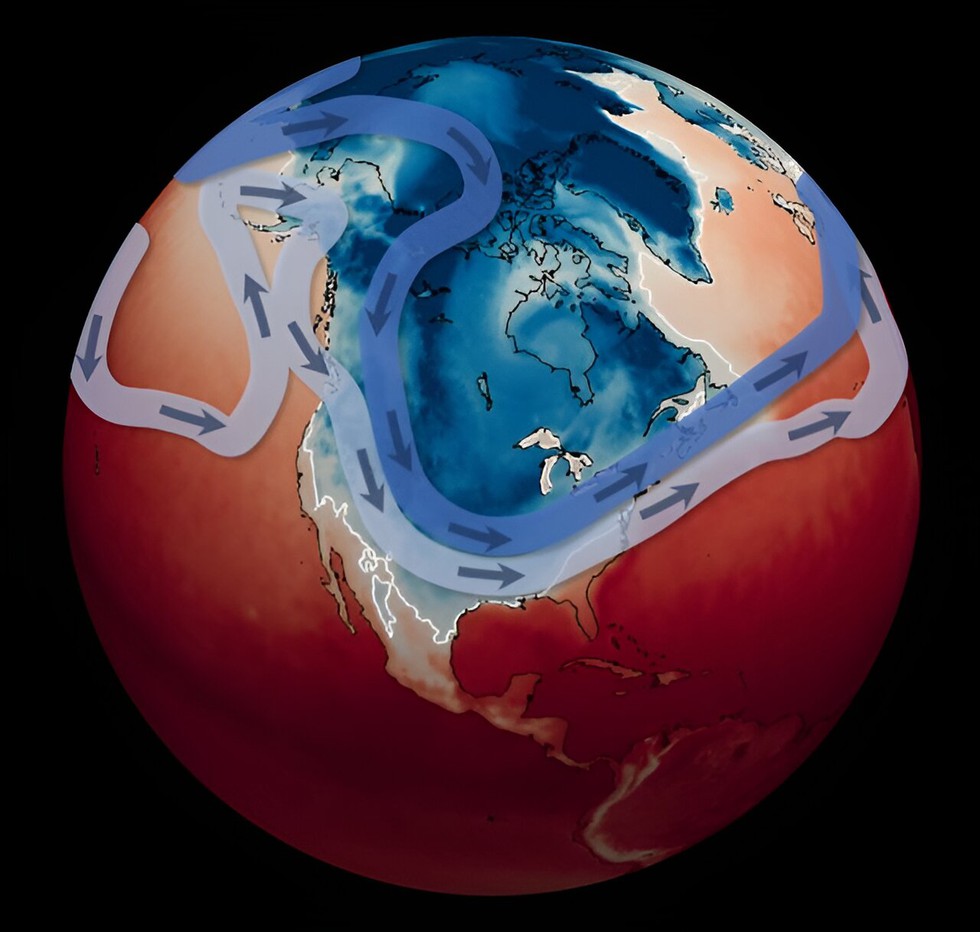
About Polar Vortex:
- The polar vortex is a large area of low pressure and cold air surrounding both of the Earth’s poles. It weakens in summer and strengthens in winter.
- The term "vortex" refers to the counter-clockwise flow of air that helps keep the colder air near the poles.
- Many times, during winter in the northern hemisphere, the polar vortex will expand, sending cold air southward with the jet stream.
- This occurs fairly regularly during wintertime and is often associated with large outbreaks of Arctic air in the United States and Canada.
- Portions of Europe and Asia also experience cold surges connected to the polar vortex.
- The polar vortex extends from the tropopause (the dividing line between the stratosphere and troposphere) through the stratosphere and into the mesosphere (above 50 km).
- Low values of ozone and cold temperatures are associated with the air inside the vortex.
Key Facts about Jet Streams:
- Jet streams are narrow bands of strong wind that generally blow from west to east all across the globe.
- Earth has four primary jet streams: two polar jet streams, near the north and south poles, and two subtropical jet streams closer to the equator.
- What Causes Jet Streams?
- Jet streams form when warm air masses meet cold air masses in the atmosphere.
- The sun doesn’t heat the whole earth evenly. That’s why areas near the equator are hot and areas near the poles are cold.
- So, when Earth’s warmer air masses meet cooler air masses, the warmer air rises higher in the atmosphere while cooler air sinks to replace the warm air.
- This movement creates an air current or wind. A jet stream is a type of air current that forms high in the atmosphere.
- Since these hot and cold air boundaries are most pronounced in winter, jet streams are the strongest during both the northern and southern hemisphere winters.
- On average, jet streams move at about 110 miles per hour.
- They are located about five to nine miles above Earth’s surface in the mid to upper troposphere, the layer of Earth’s atmosphere where we live and breathe.
Prelims Pointers
March 28, 2024
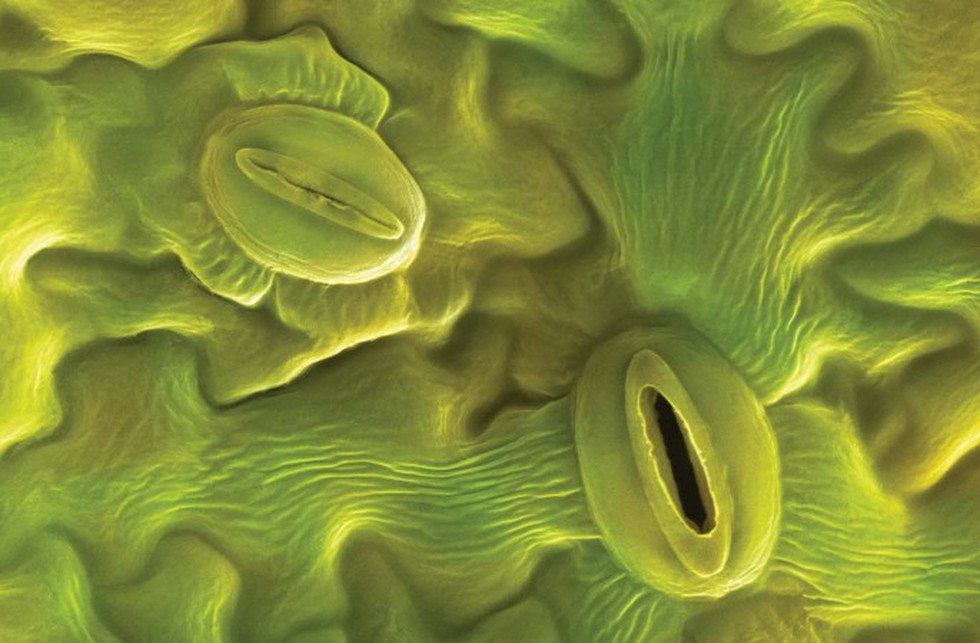
About Stomata:
- They are tiny openings or pores in plant tissue that allow for gas exchange. They are typically found in plant leaves but can also be found in some stems.
- They allow a plant to take in carbon dioxide, which is needed for photosynthesis. They also help to reduce water loss by closing when conditions are hot or dry.
- Stomata look like tiny mouths which open and close as they assist in transpiration. Plants that reside on land typically have thousands of stomata on the surfaces of their leaves.
- The majority of stomata are located on the underside of plant leaves, reducing their exposure to heat and air currents.
- In aquatic plants, stomata are located on the upper surface of the leaves.
- A stoma (singular for stomata) is surrounded by two types of specialized plant cells that differ from other plant epidermal cells. These cells are called guard cells and subsidiary cells.
- Guard cells are large, crescent-shaped cells, two of which surround a stoma and are connected to at both ends.
- A stomate opens and closes in response to the internal pressure of guard cells. These cells enlarge and contract to open and close stomatal pores.
- Guard cells work to control excessive water loss, closing on hot, dry, or windy days and opening when conditions are more favourable for gas exchange.
- Guard cells also contain chloroplasts, the light-capturing organelles in plants.
- Subsidiary cells, also called accessory cells, surround and support guard cells.
- They act as a buffer between guard cells and epidermal cells, protecting epidermal cells against guard cell expansion.
- For most plants, dawn triggers a sudden increase in stomatal opening, reaching a maximum near noon, which is followed by a decline because of water loss.
Prelims Pointers
March 28, 2024
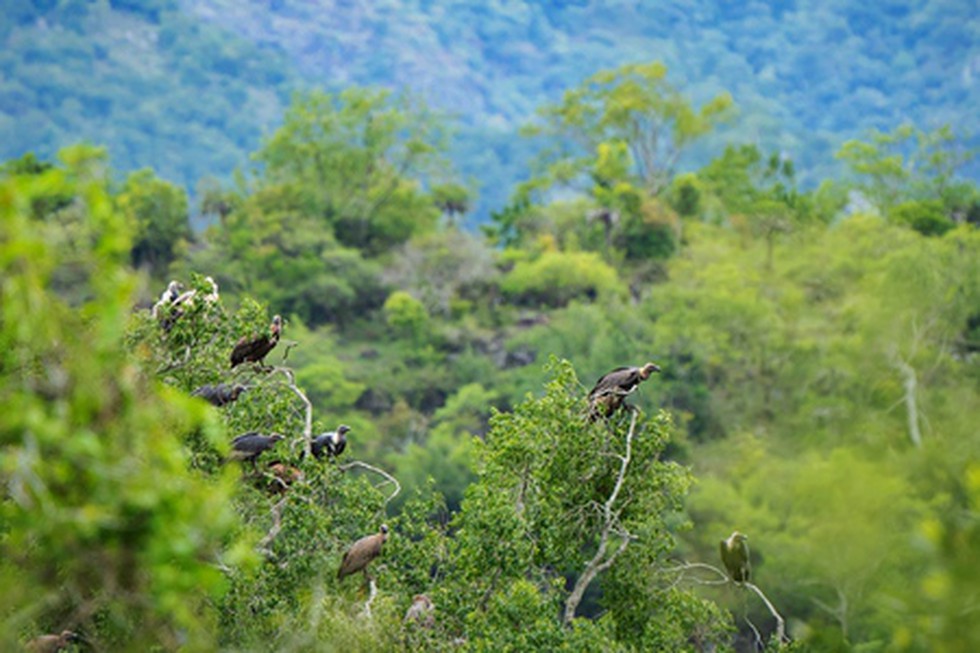
About Moyar Valley:
- Location: It extends from Gudalur through the core area of Mudumalai Tiger Reserve. This entire stretch is an important biome in the Nilgiri Biosphere Reserve.
- It is sheltering several vital species like tiger and elephant and the critically endangered Gyps vulture. It is the only region in peninsular India where you have the biggest nesting colony of Gyps vultures in the wild.
- How it supports Gyps population?
- This valley offers plenty of wild kills and natural deaths of wildlife from Moyar village to Bhavanisagar.
- This provides a stable food-chain to nature’s scavengers, simply because these carcasses are mostly free from NSAIDs (Non-Steroidal Anti-inflammatory Drugs) and other poisonous chemicals.
Key facts Mudumalai Tiger Reserve
- It is located in the Nilgiris District of Tamil Nadu, at the tri-junction of three states, viz, Karnataka, Kerala and Tamil Nadu.
- It lies on the Northeastern and Northwestern slopes of Nilgiri hills which is a part of the Western Ghats. It is part of the Nilgiris Biosphere Reserve, the first Biosphere Reserve in India.
- It has a common boundary with Wayanad Wildlife Sanctuary (Kerala) on the West, Bandipur Tiger Reserve (Karnataka) on the North, the Nilgiris North Division on the South and East, and Gudalur Forest Division on the South West.
Prelims Pointers
March 28, 2024
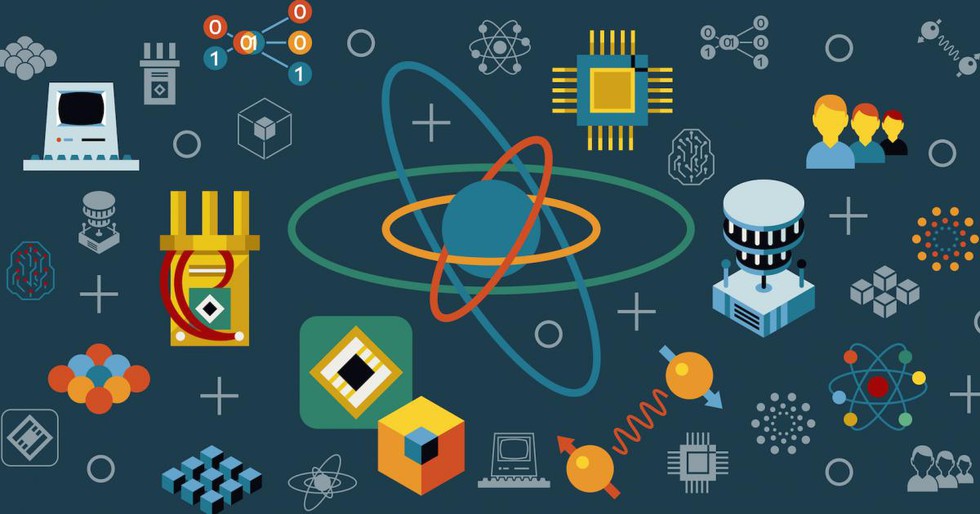
About Quantum cryptography:
- It is also known as quantum encryption which uses the naturally occurring properties of quantum mechanics to secure and transmit data in a way that cannot be hacked.
- It is completely secure against being compromised without the knowledge of the message sender or the receiver.
- It is impossible to copy or view data encoded in a quantum state without alerting the sender or receiver. It uses individual particles of light, or photons, to transmit data over fiber optic wire.
- Process:
- Quantum cryptography is not replacing traditional cryptography; rather, it allows for a more secure transfer of the keys used in encoding and decoding.
- The amount of information which can be transferred using quantum cryptography is not very large or very fast, but it is very secure.
- The maximum speed, scale and security of the transfer is achieved by sending the secret key using quantum coding, but encoding and sending the data itself using traditional methods and algorithms.
- Benefits of quantum cryptography
- Provides secure communication: Instead of difficult-to-crack numbers, quantum cryptography is based on the laws of physics, which is a more sophisticated and secure method of encryption.
- Detects eavesdropping: If a third party attempts to read the encoded data, then the quantum state changes, modifying the expected outcome for the users.
- Offers multiple methods for security: There are numerous quantum cryptography protocols used. Some, like QKD, for example, can combine with classical encryption methods to increase security.
Prelims Pointers
March 28, 2024
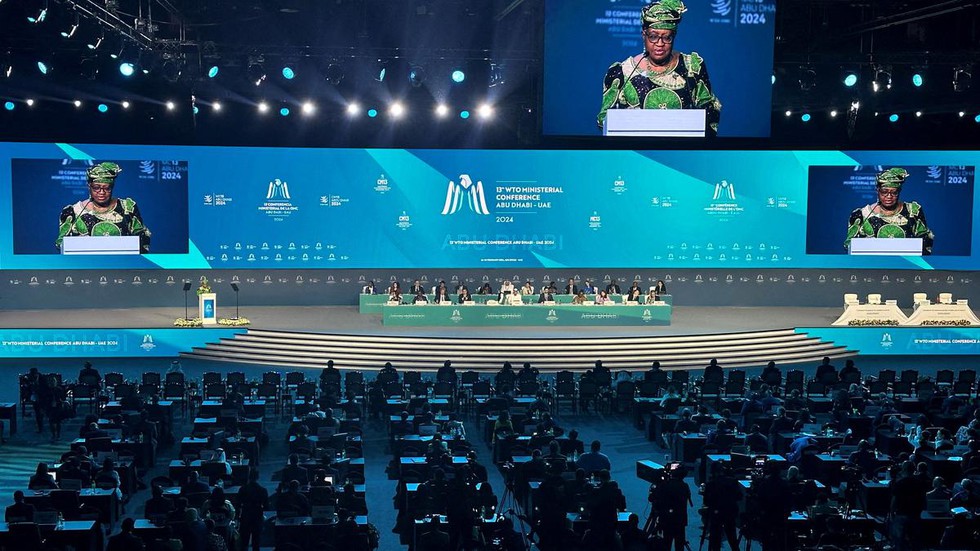
About Investment Facilitation for Development:
- It is a joint Initiative launched at the 11th WTO Ministerial Conference (MC11) in December 2017 on a plurilateral basis by 70 countries. This was done through a process known as the Joint Statement Initiative.
- Aim: This agreement aims to create legally binding provisions to facilitate investment flows. It also aims to develop predictable, transparent and open investment rules that will contribute to more efficient investment flows and increased business confidence and it is now in a formal negotiation phase.
- Objective: A core objective of the framework is to facilitate greater participation by developing and least-developed WTO Members in global investment flows.
- The IFD agreement was finalised in November 2023 and at present around 120 of 166 WTO member countries (more than 70% of the membership) back this agreement.
- Key areas included in the IFD Agreement to promote and facilitate investment
- Improving regulatory transparency and predictability: such as publishing investment-related measures and establishing enquiry points;
- Streamlining and speeding up administrative procedures: such as removing duplicative steps in approval processes and simplifying applications;
- Enhancing international cooperation and addressing the needs of developing members – such as providing technical assistance and capacity-building for developing countries and least developed countries; and
- India is not a part of this initiative.
Prelims Pointers
March 28, 2024

About Treasury Bills:
- Treasury bills or T-bills are money market instruments. These are short term debt instruments issued by the Government of India.
- Maturity period: At present, treasury bills are issued in three maturities — 91-day, 182-day and 364-day.
- These are zero coupon securities and pay no interest. Instead, they are issued at a discount and redeemed at the face value at maturity.
- Who can buy?
- Individuals, trusts, institutions and banks can purchase T-Bills. But they are usually held by financial institutions.
- Banks give treasury bills to the RBI to get money under repo. Similarly, they can also keep it to fulfil their Statutory Liquid Ratio (SLR) requirements.
- How do T-bills work?
- Treasury bills are issued at a discount to original value and the buyer gets the original value upon maturity. For example, a Rs 100 treasury bill can be availed of at Rs 95, but the buyer is paid Rs 100 on the maturity date.
- The return on treasury bills depends on the liquidity position in the economy. When there is a liquidity crisis, the returns are higher, and vice versa.
Prelims Pointers
March 28, 2024
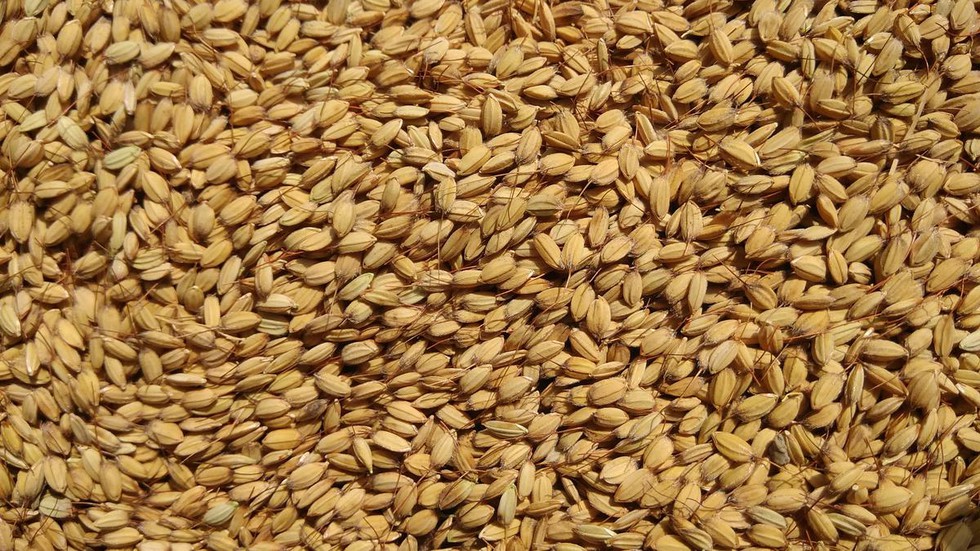
About Mushk budiji Rice:
- It is short, bold aromatic rice grown in the higher reaches of Kashmir valley. It possesses a harmonious blend of taste, aroma and rich organoleptic properties.
- It is mainly grown in areas of Sagam, Panzgam and Soaf Shali of district Anantnag.
- The consumption of aromatic rice in Kashmir has now been limited to special occasions, marriages and festivals. It has received a Geographical Indication (GI) tag.
Highlights of the study:
- Scientists conduct a study of selected locations on the flavour profile of mushk budiji using gas chromatography-mass spectroscopy (GC-MS) and an ‘electronic nose’.”
- Based on these studies, the scientists identified 35 volatile organic compounds (VOCs) in mushk budiji rice samples.
- Acetyl-1-pyrroline (2-AP) is a known aromatic compound found in some varieties – but it was present only in mushk budiji samples collected from higher altitudes.
What is Chromatography-mass spectroscopy?
- It is an analytical method used to reveal the presence of volatile compounds present in organic mixtures extracted from geological, environmental and biological samples.

